Works of Art in a Train Station
Inaugurated in 1986, the Musée d’Orsay is housed in the former Gare d’Orsay train station, which was built to welcome crowds of visitors to the Universal Exhibition of 1900 in high style.
The Musée d’Orsay presents an outstanding panorama of western artistic production, spanning the period from the European revolutions of 1848 to the first decade of the 20th century. It boasts 140,000 extremely varied works – paintings, sculptures, drawings, objets d’art, photographs – and the world’s finest collection of impressionist and post-impressionist paintings.
These works reflect the extraordinary artistic vibrancy of this era characterized by the development of a new urban, industrial, capitalist, and colonial society. Against a backdrop of far-reaching cultural change, artistic movements at odds with tradition proliferated. Creators sought to assert their originality and Invent new ways of depicting the world. I hope you enjoy your visit to Musée d’Orsay!
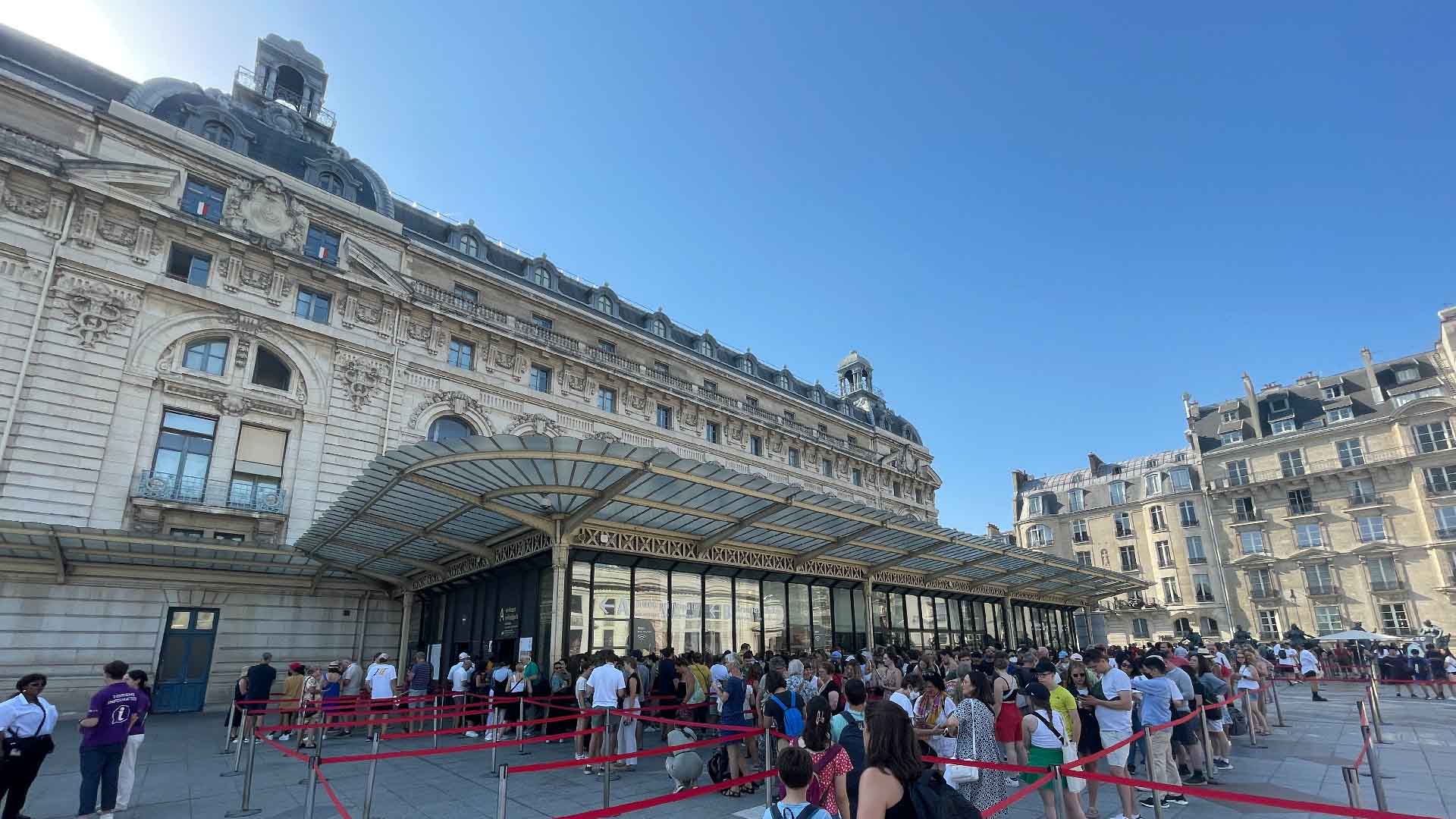
Outside Musée d’Orsay early morning!
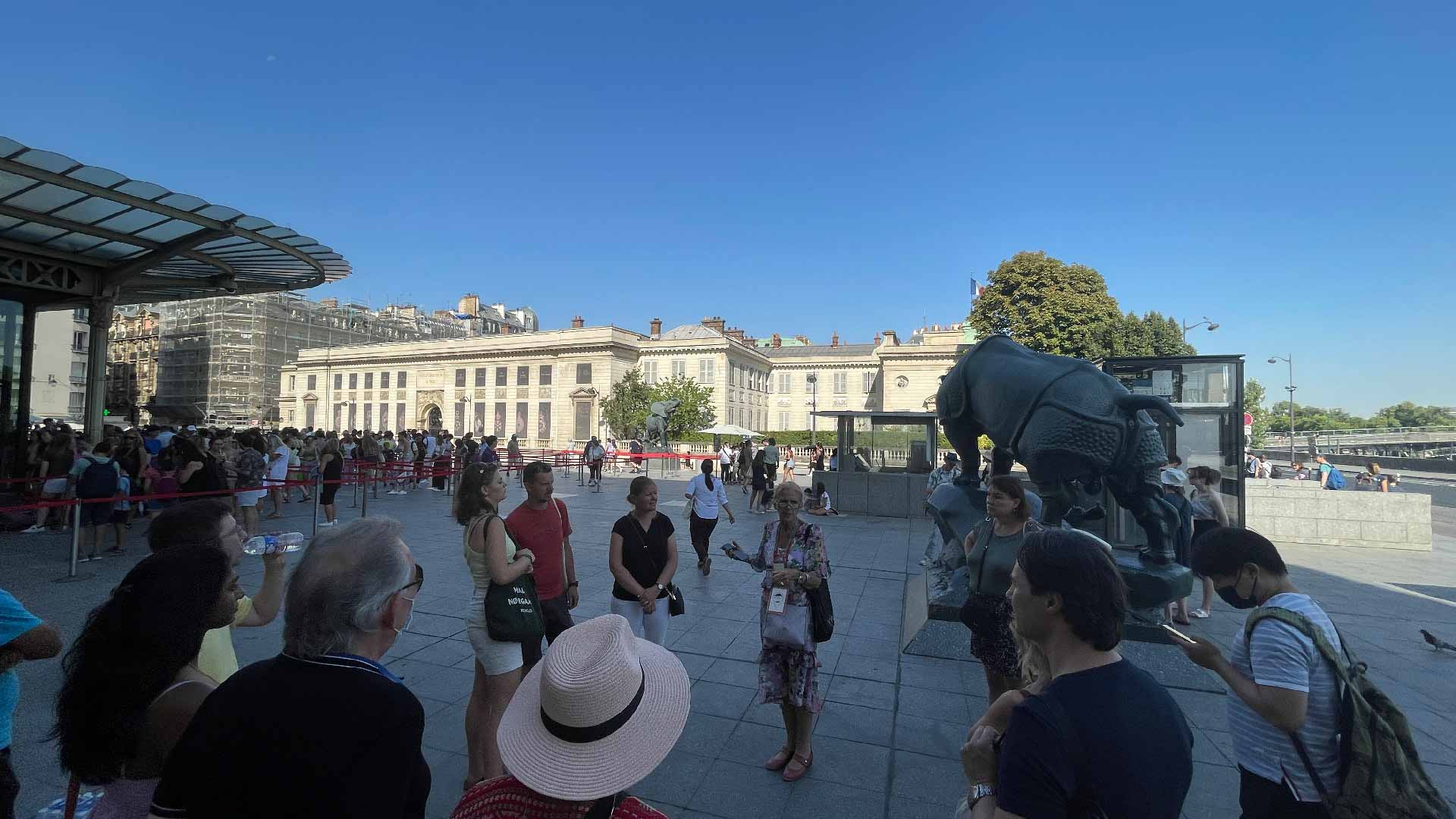
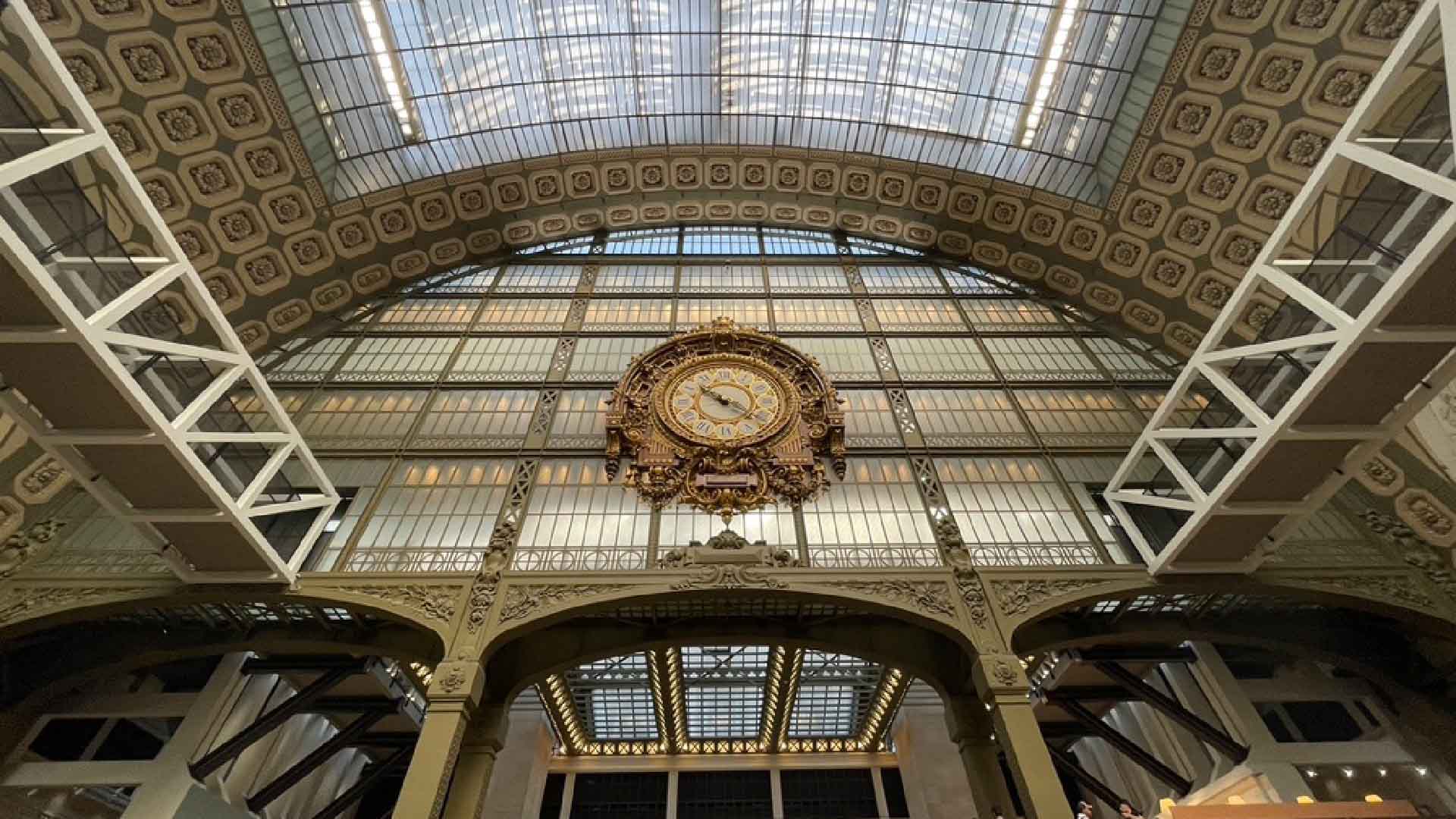
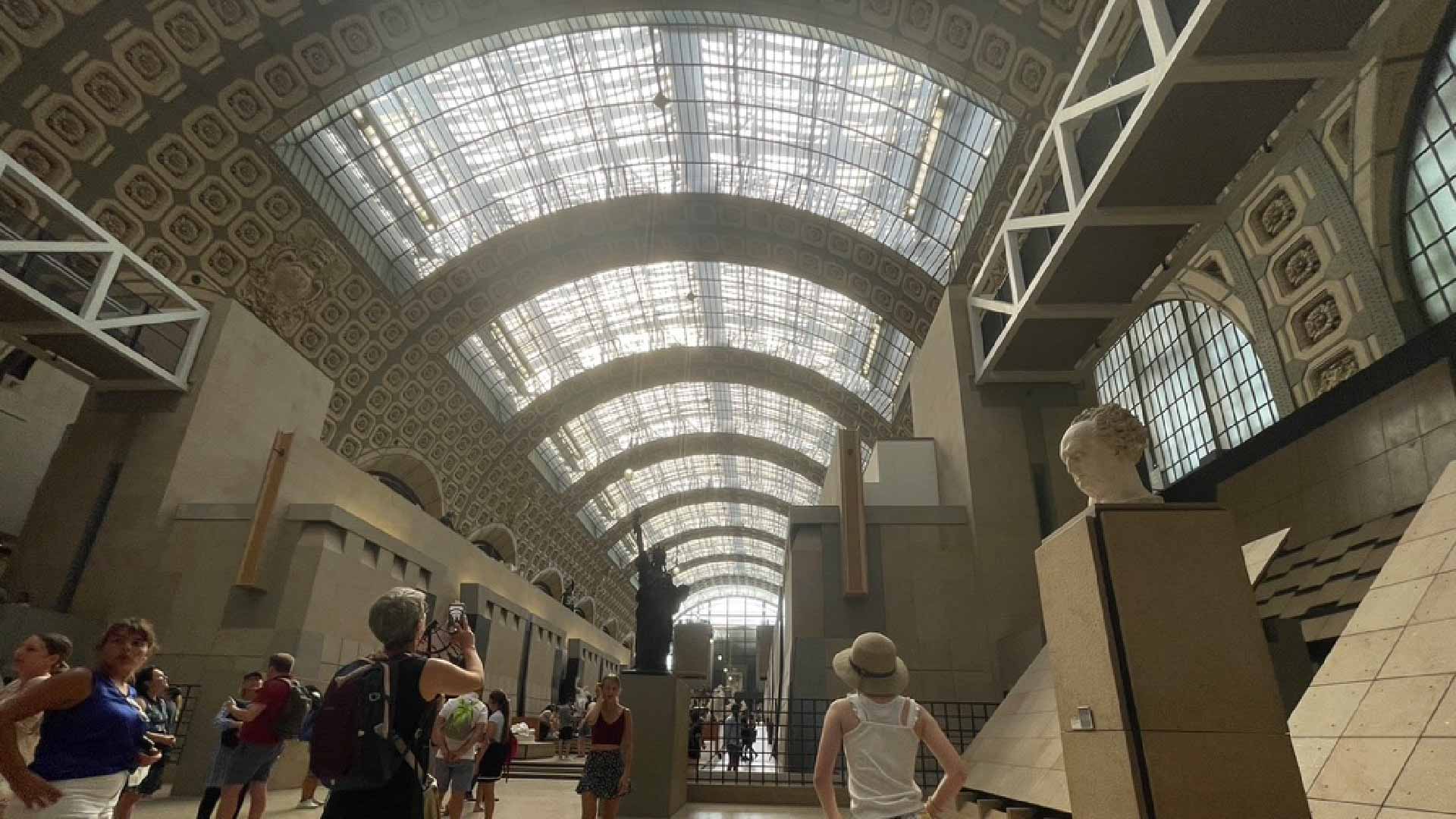
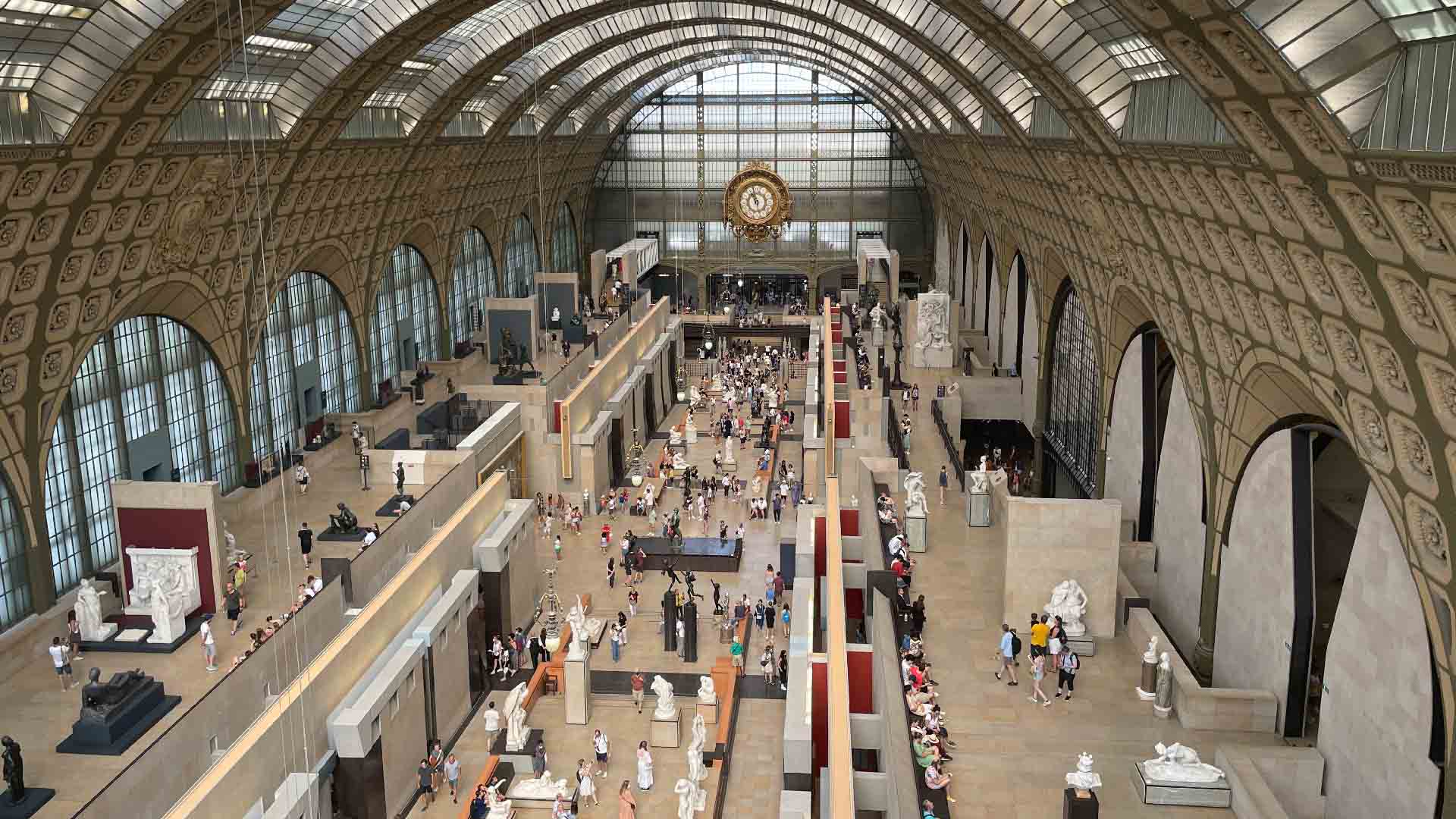
Pictures of Musée d’Orsay.
From Impressionism to Neo-Impressionism
In 1874 the painters Paul Cézanne, Edgar Degas, Claude Monet, Berthe Morisot, Camille Pissarro, Auguste Renoir, and Alfred Sisley organized an independent exhibition in order to bypass the annual selection process carried out by the Salon jury, which often rejected their work.
One critic referred to them ironically as impressionist painters, an expression derived from the title of a painting by Monet. The term has survived the test of time.
The Impressionists wanted to paint their own era. They uncovered its modernity in the stations, avenues, and cafés of Paris, in popular leisure pursuits on the banks of the Seine, and in suburban landscapes where the industry was already making its mark.
The railways also allowed them to explore the coast and beaches which became fashionable during the Second Empire. In the 1870s, the group’s landscape artists favored a style of painting that immortalized a moment, creating the impression of spontaneity, worlds away from the taste for detail and the flawless finish taught at the École des beaux-arts.
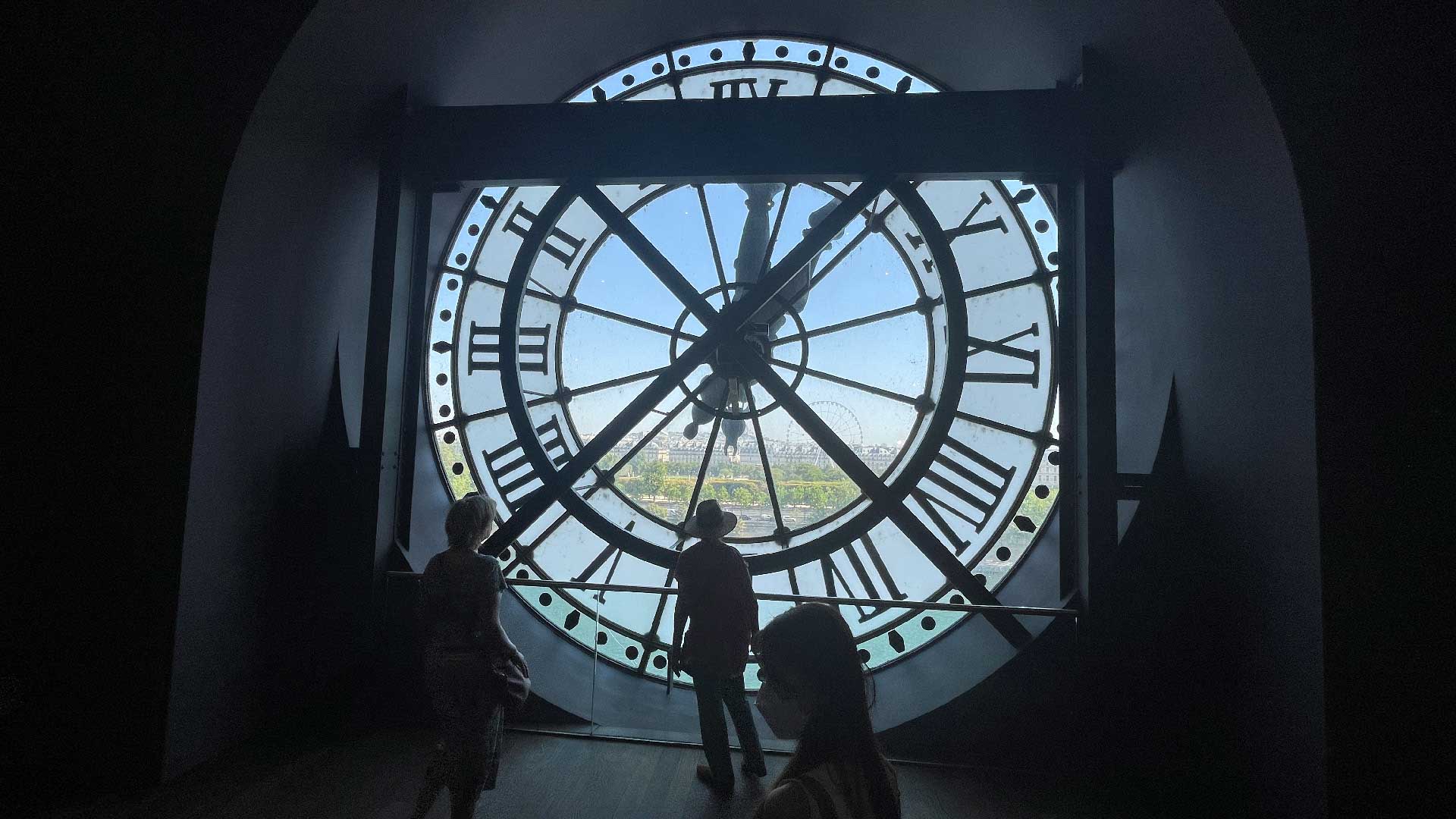
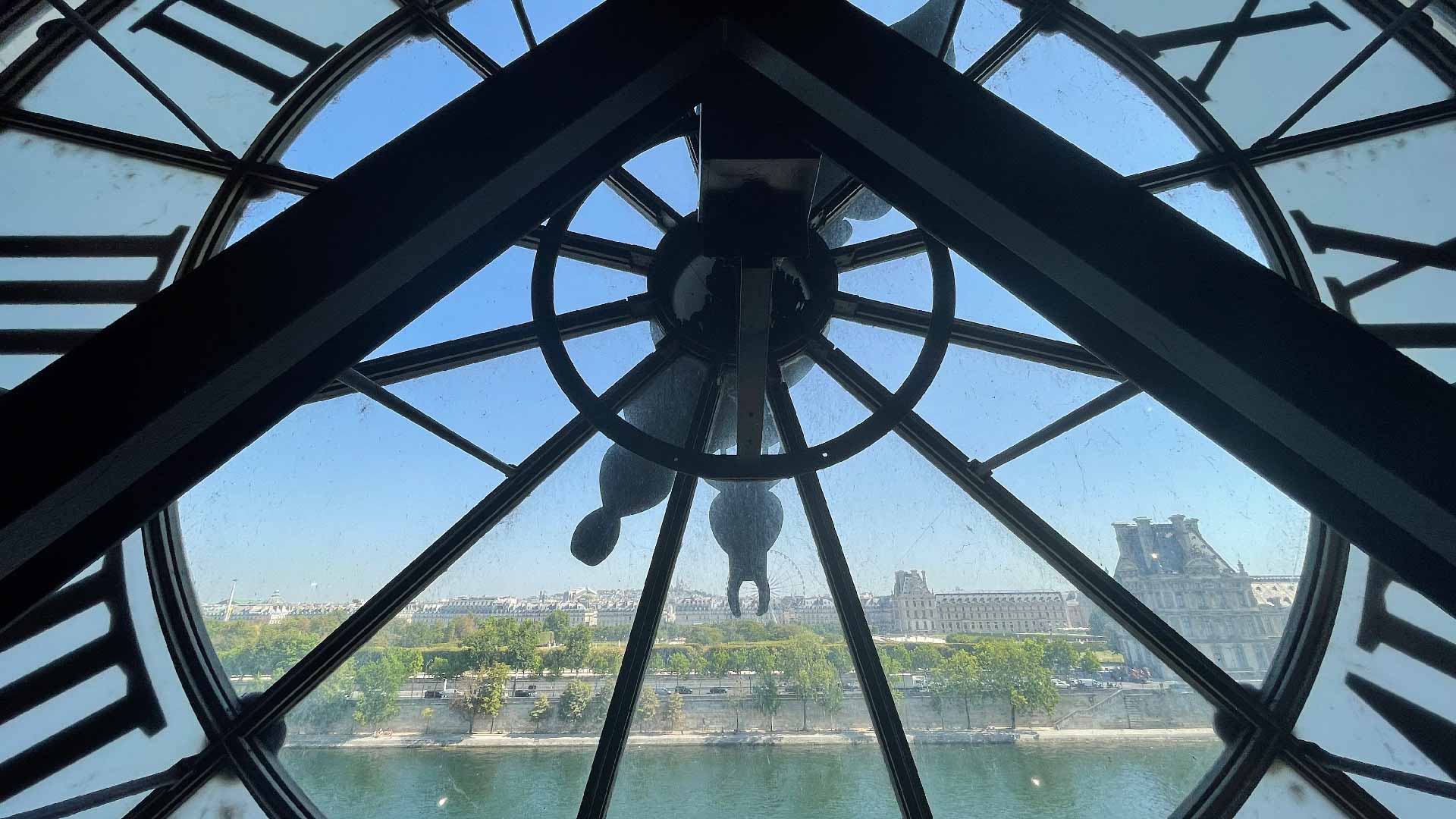
The two iconic clocks that dominate the ends of the facade on the exterior of Musée d’Orsay — are vestiges that remind us that, before it was a museum, Musée d’Orsay was a train station.
Their subject matter was variations in light and color captured at different times of day and in different seasons. Indoor painting using models still had a role to play for some artists such as Degas and Caillebotte, but they no longer depicted the body in conventional heroic poses, seeking out instead the true nature of the modern body.
The difficult early days when they received scant support from art enthusiasts, critics, and dealers, gave way to international renown at the dawn of the 20th century. Eight Impressionist exhibitions were held between 1874 and 1886. Georges Seurat and Paul Signac were invited to take part in the final exhibition by Pissarro. They were the leaders of a new movement known as Neo-Impressionism, which claimed to take a scientific approach to painting.
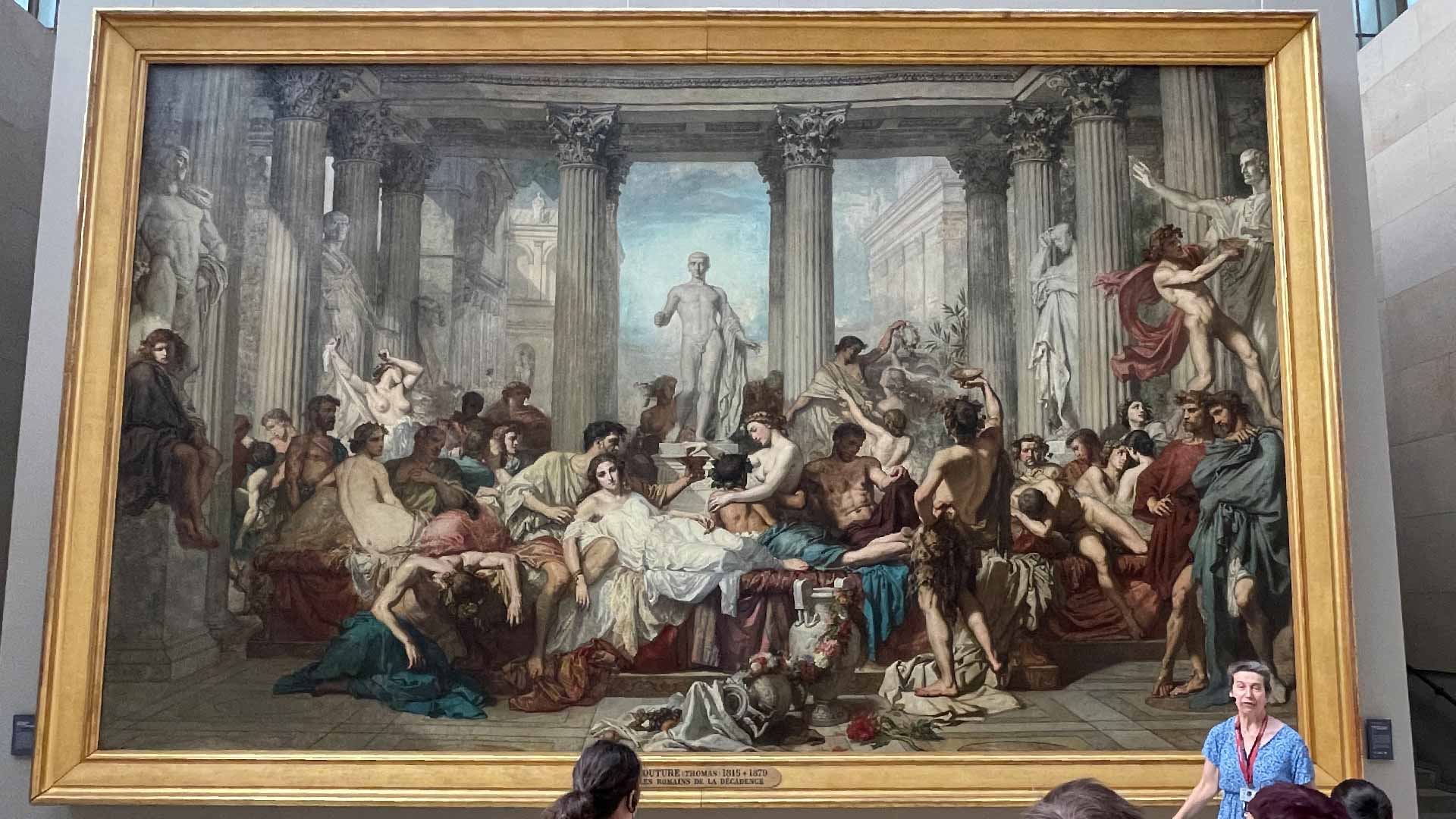
The Romans in their Decadence by Thomas Couture (1847, Oil on canvas)
Gustave Courbet
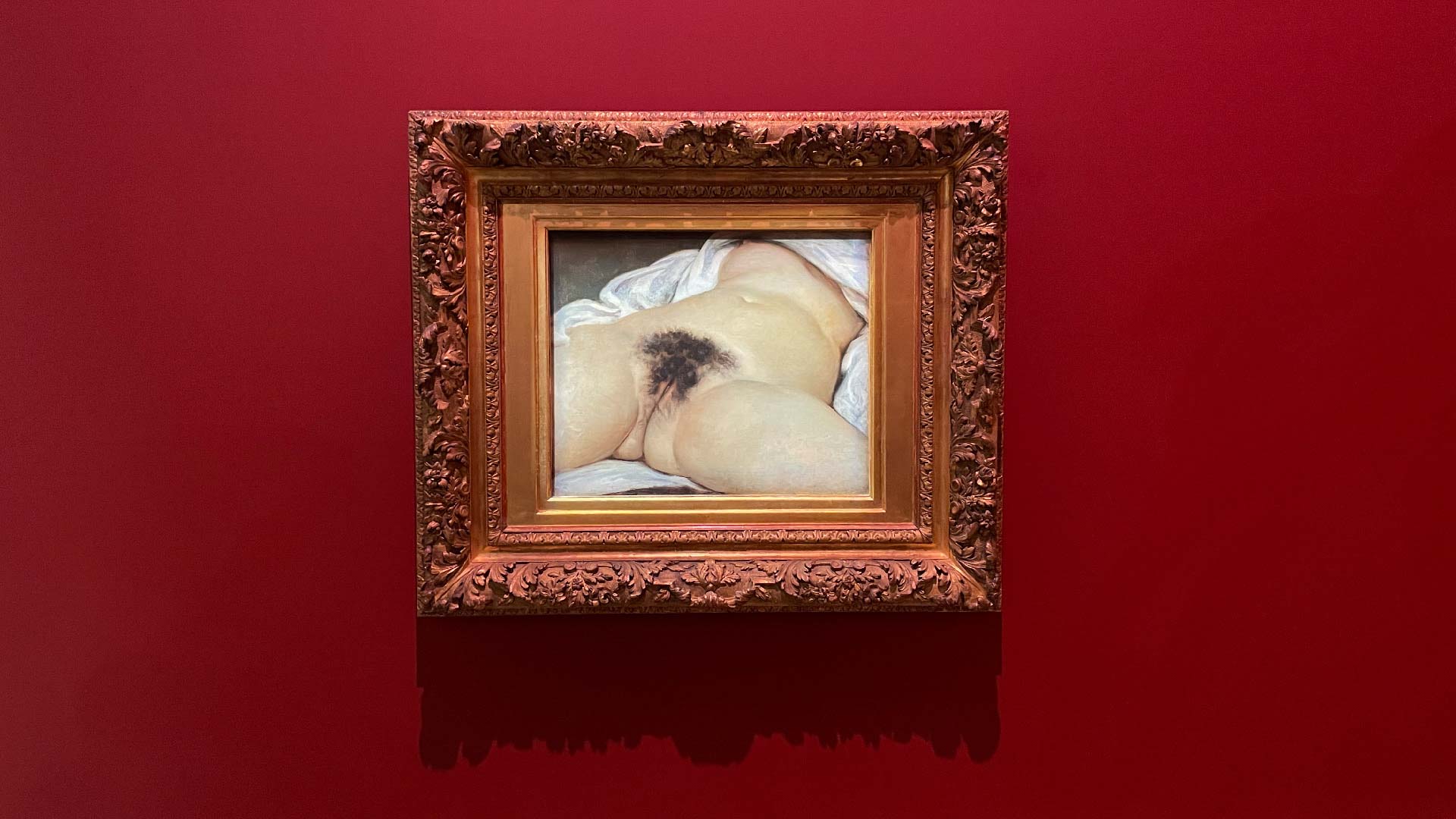
L’Origine du monde / The Birth of the World (1866, Oil on canvas)
Édouard Manet
Born in Paris in 1832, Édouard Manet was the eldest son of a middle-class family. Having failed the entrance exam for the French Naval Academy, he joined Thomas Couture’s studio in 1850 and supplemented his art training with many trips abroad.
Throughout his career, he strove to “conquer the Salon”, regularly suffering rejections from the jury. While drawing inspiration from the old masters (Titian, Velazquez, Rubens, etc.), he broke with pictorial conventions. He invented a new style of painting whose modernity was characterized by technical boldness (sketchy brushwork leaving visible strokes, harsh colors, a play on contours, and the treatment of perspective), and the choice of realistic and provocative subjects. In many of his works, the intensity of the figures presented full face establishes an unusual relationship between the space depicted in the painting and that of the viewer.
Admired by Charles Baudelaire, Émile Zola, and Stéphane Mallarmé, manet was also a reference figure for impressionist painters, although he chose never to exhibit with them.
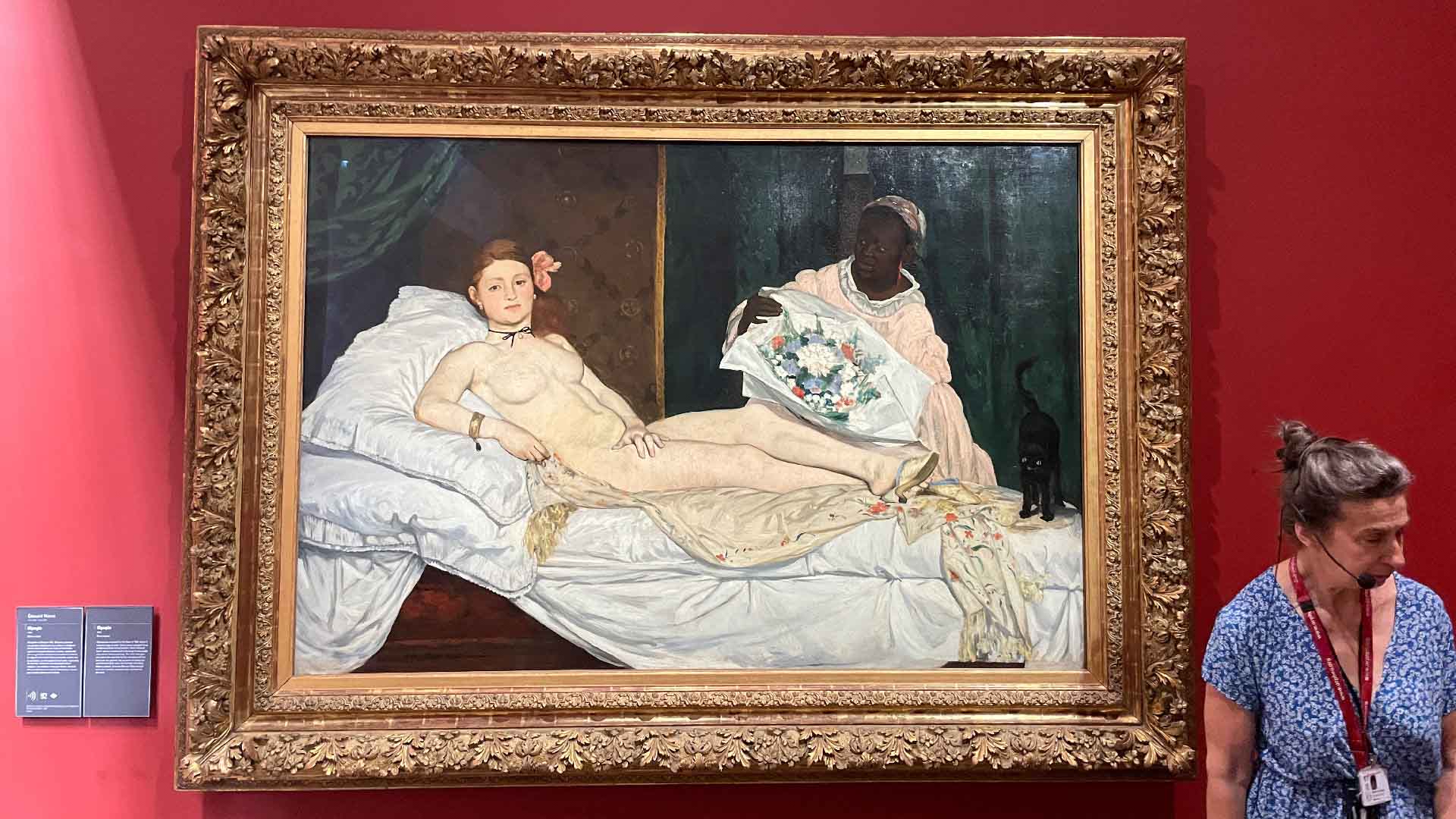
Olympia (1865, Oil on canvas)
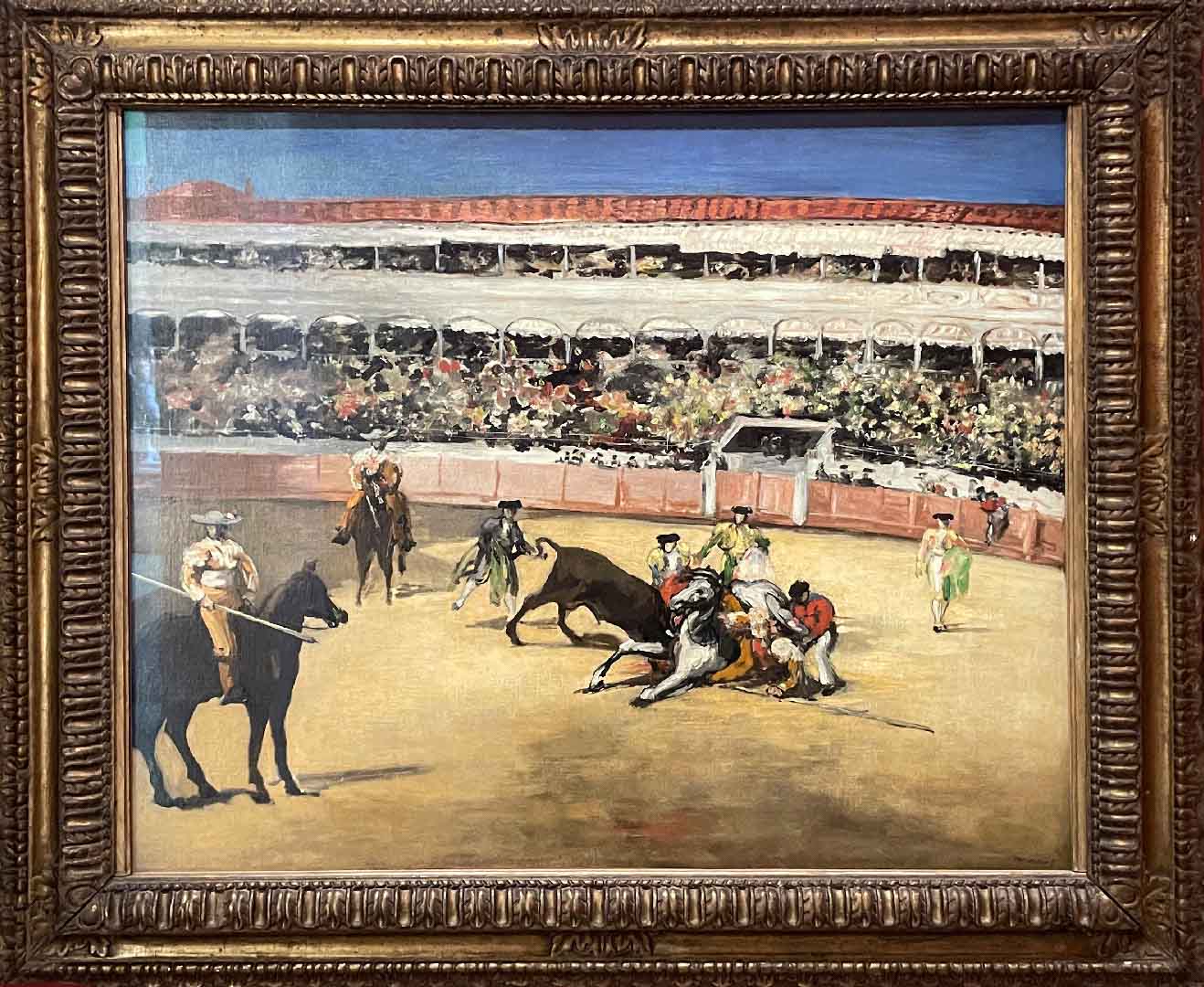
Bullfight (1866, Oil on canvas)
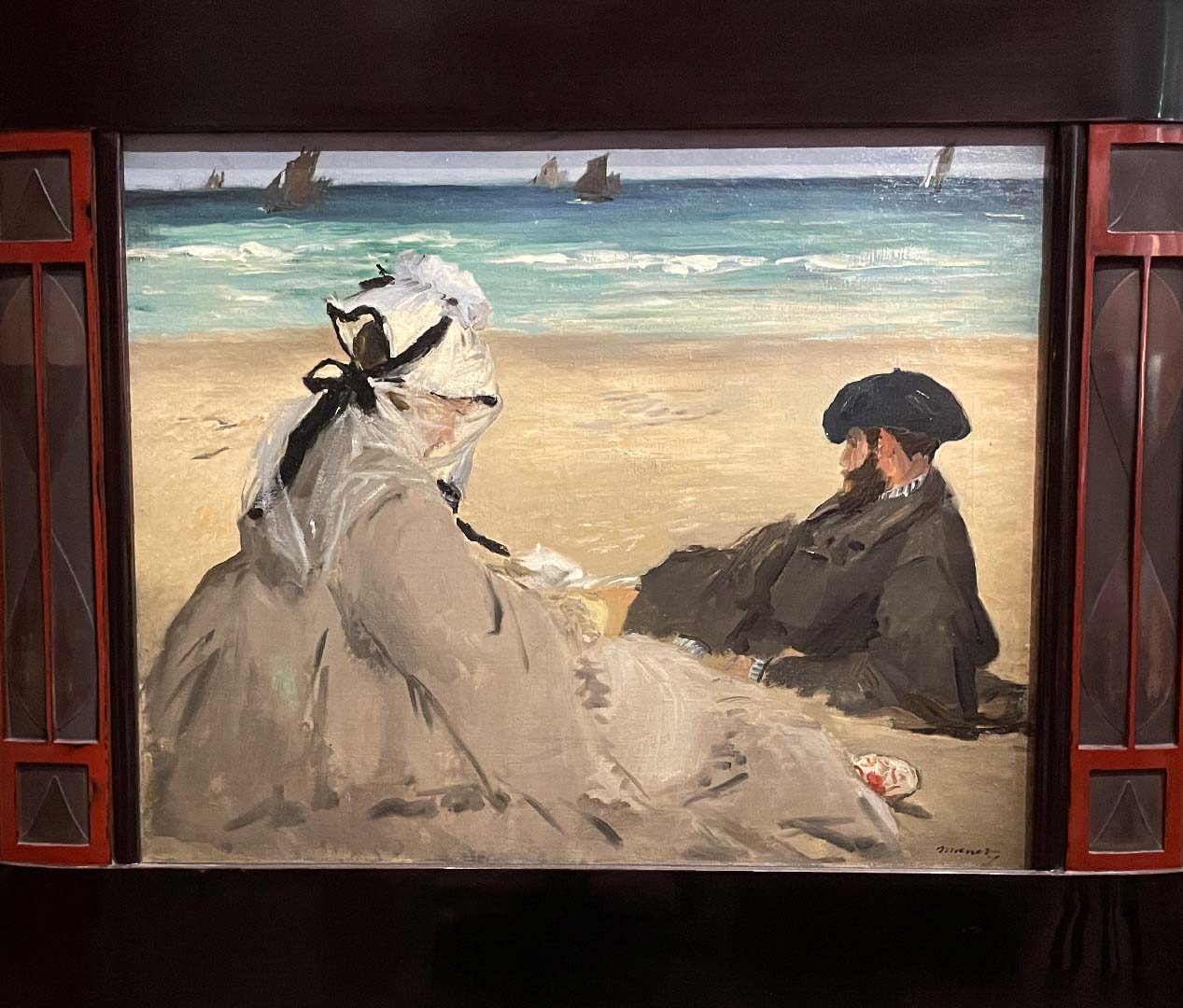
On the Beach (1872, Oil on canvas)
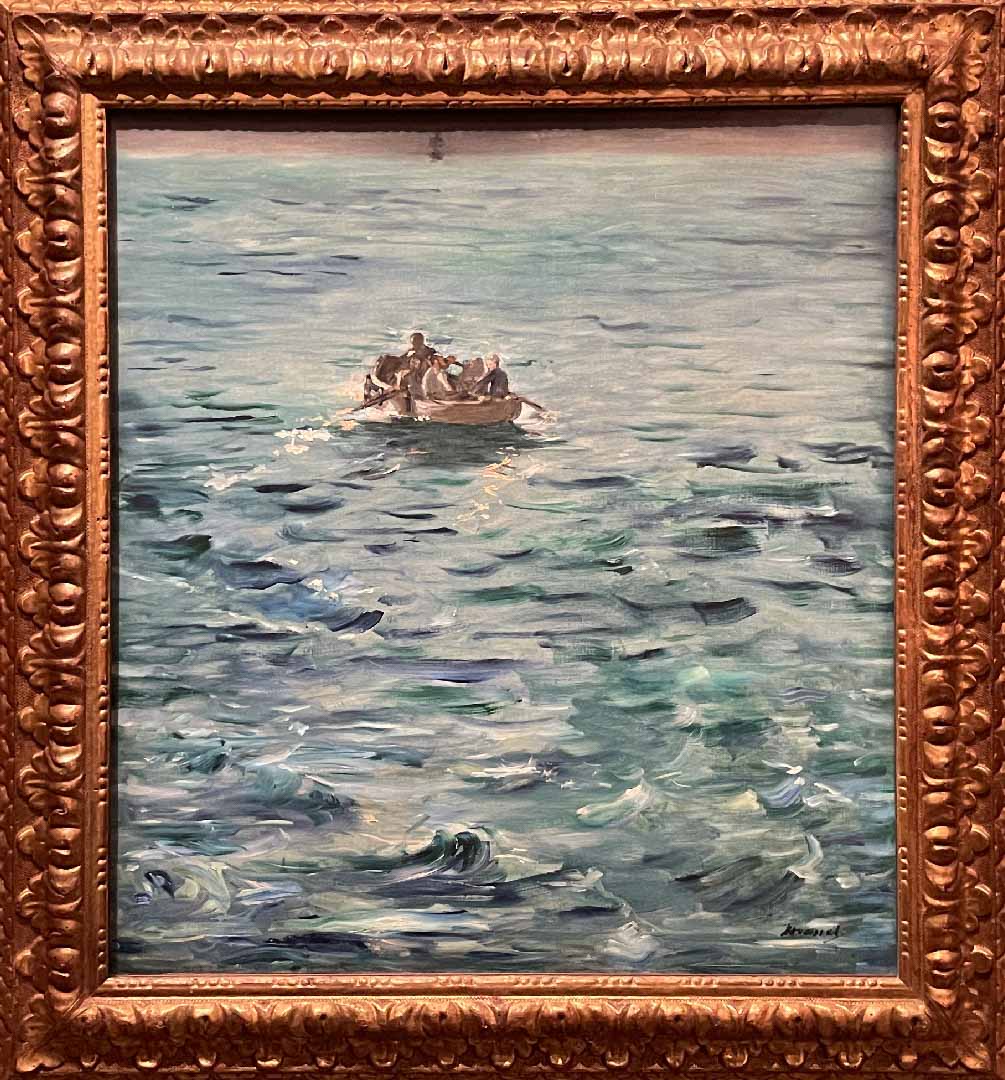
The Escape from Rochefort (1881, Oil on canvas)
Pierre-Auguste Renoir
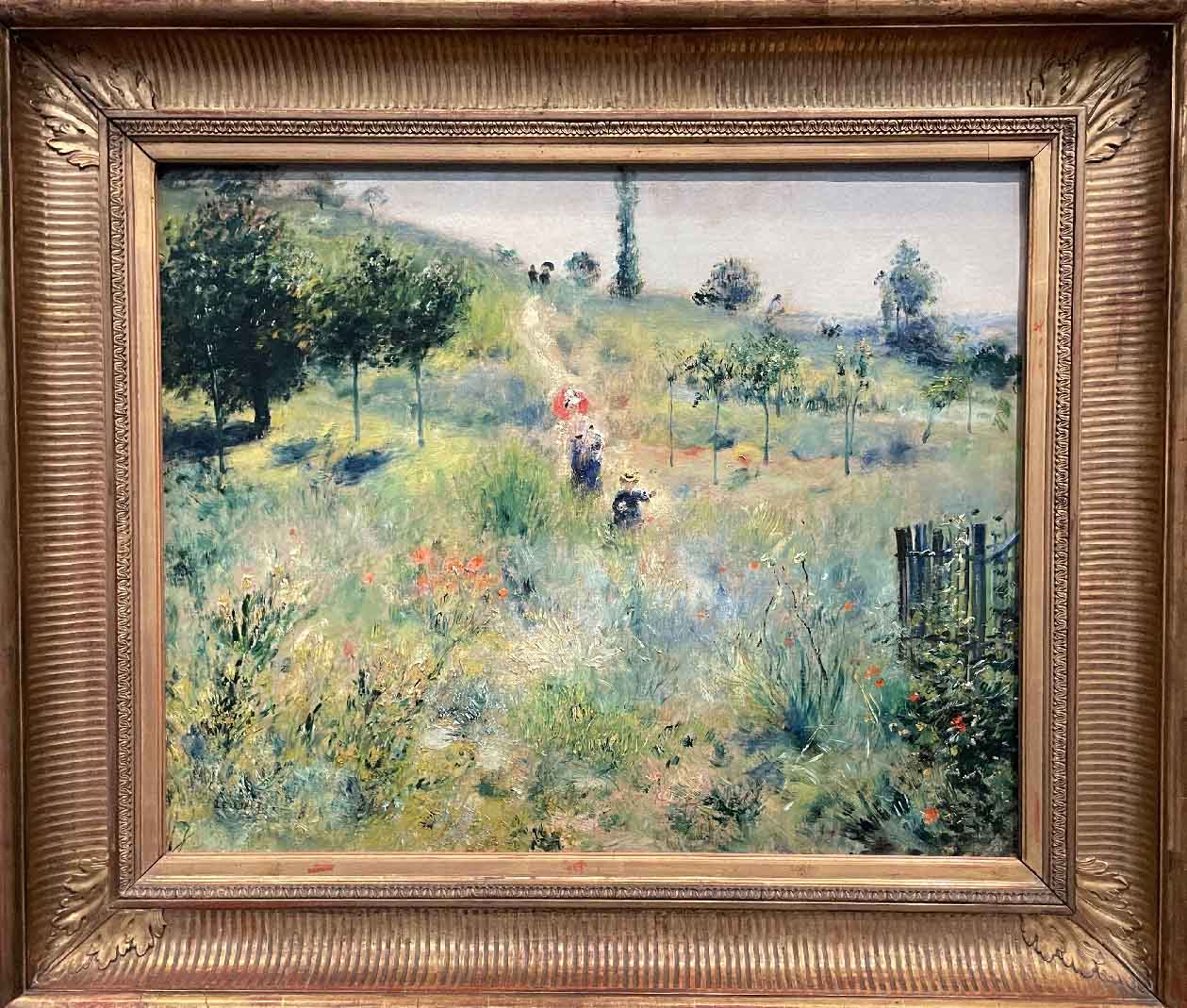
Path Leading through Tall Grass (1875, Oil on Canvas)
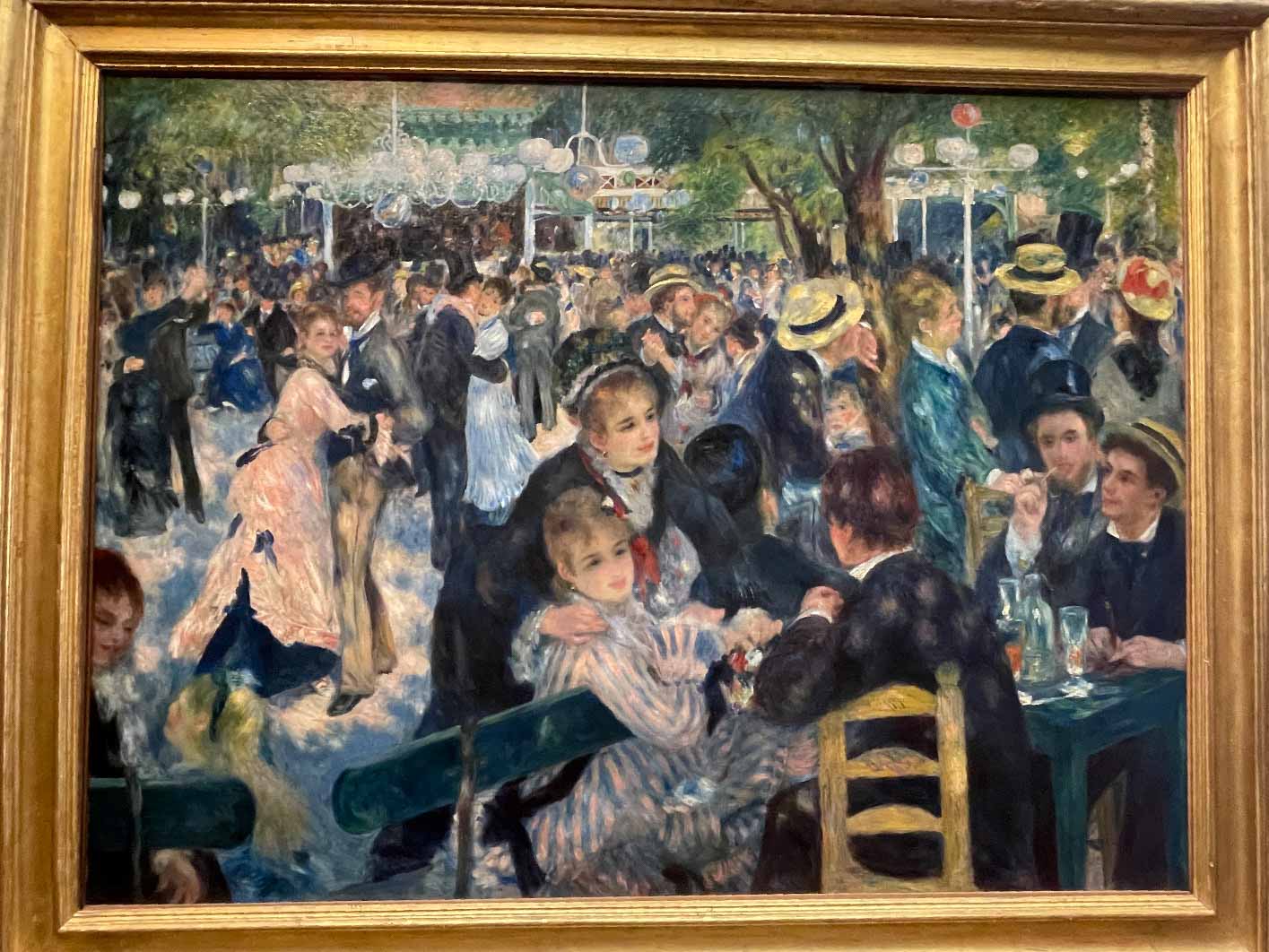
Bal du moulin de la Galette (1876, Oil on Canvas)
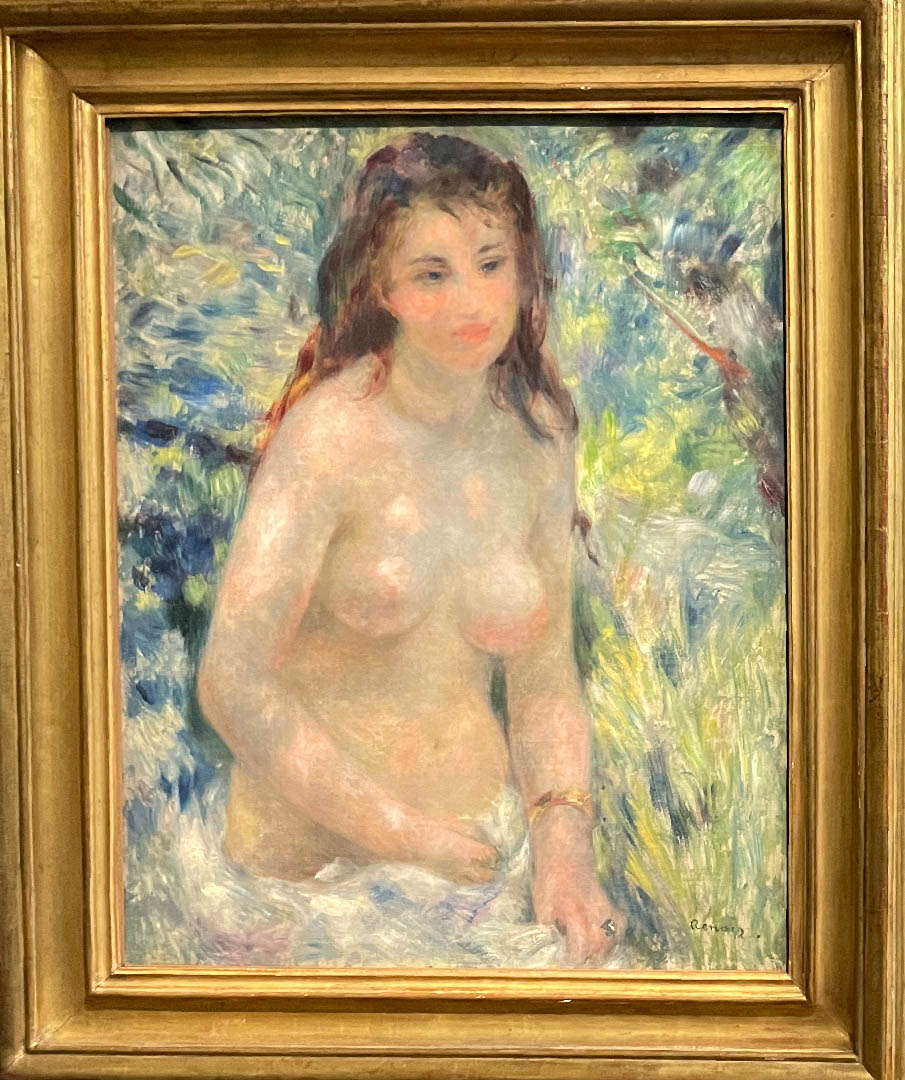
Study, torso, Sunlight Effect (1876, Oil on Canvas)
In 1874, this painting attracted a sarcastic response from some critics who were shocked by the colors used to paint the model’s skin. Instead of applying the shaded tones of brown and grey used in academic art, Renoir paints colored shadows exactly as he sees them. One critic said, “a woman’s torso is not a mass of decomposing flesh which purplish-green stains that denote a state of complete putrefaction in a corpse!”
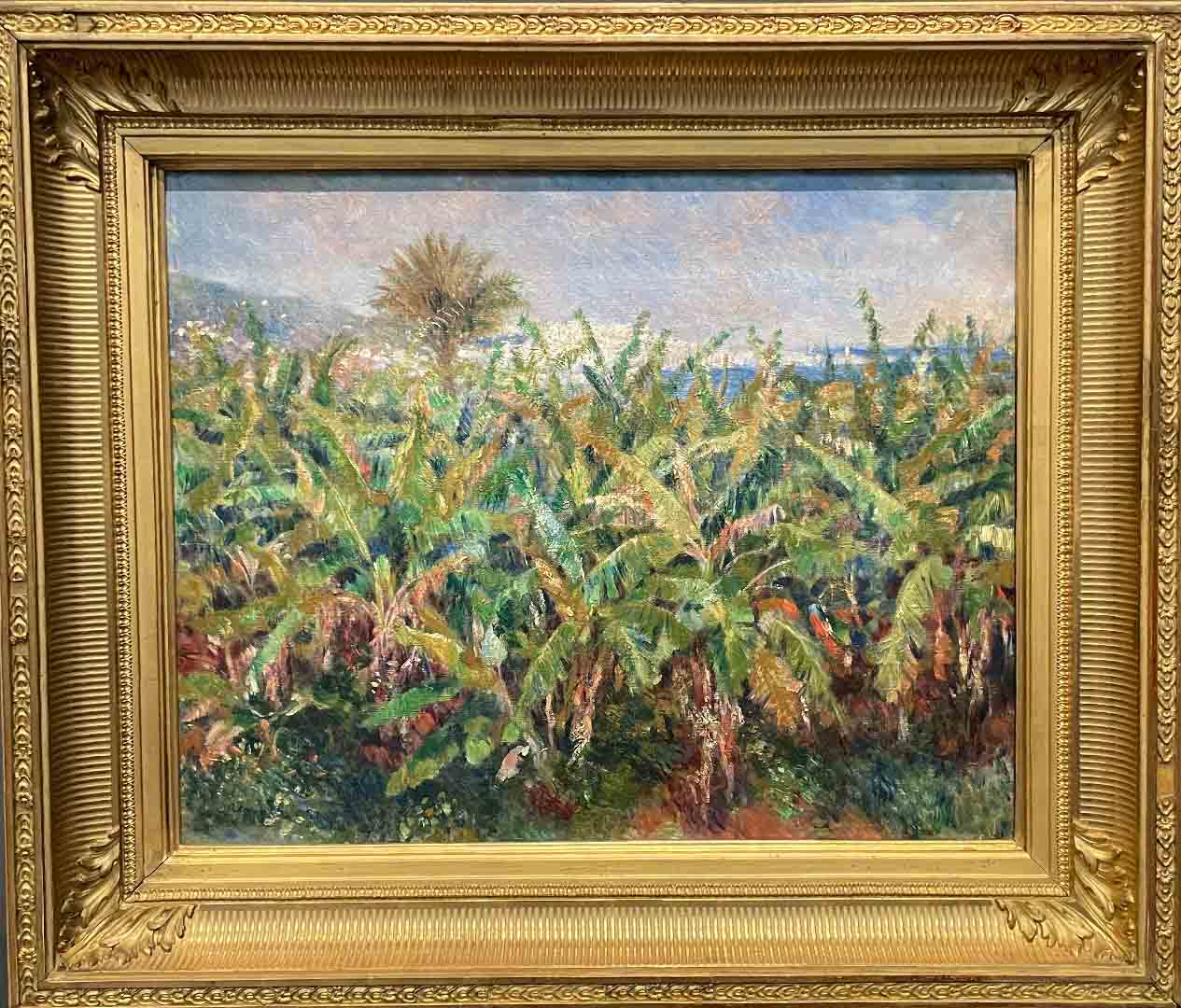
Field of Banana Trees (1881, Oil on Canvas)
In the spring of 1881, Renoir was making a much better living from his painting and could afford to travel. In Algeria, he waxed lyrical about the Mediterranean light and colors. For this Field of Banana Trees, he erected his easel on a hill to the east of the Bay of Algiers, facing the White City.
The daring aspect of this painting lies in the explosion of leaves poting in opposite directions which add movement to the composition. They invade the canvas so thoroughly that the city in the distance can only be discerned by its delicate dazzling white silhouette.
Claude Monet
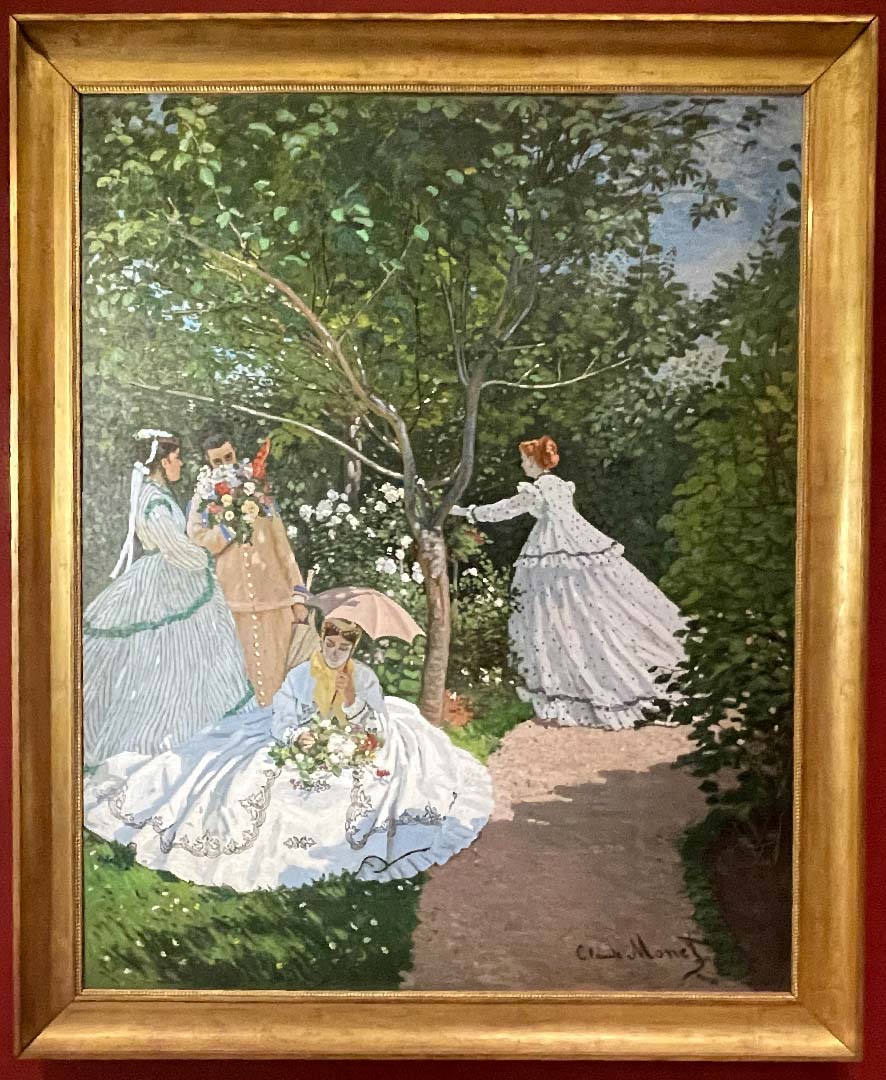
Femmes au Jardin: An early masterwork by Claude Monet newly conserved
A major work from Monet’s early career, Femmes au Jardin was recently conserved at the Centre de Recherche et de Restauration des Musées de France. In the spring of 1866, Monet embarked on painting this monumental canvas, working outside in his garden at Ville-d’Avray, using his partner Camille Doncieux as the model for the three figures on the left.
Start en plein air – in a trench dug specifically for this purpose – the painting was often moved around and got damaged in its lower part; a large tear was patched during Monet’s lifetime. These repairs had deteriorated and layers of yellowed varnish were obscuring the picture’s vivid colors and vibrant brushwork.
Technical images reveal that Monet modified his composition. The treatment and cleaning of the painting have restored its original luminosity; the dazzling whites contrast with the grey-blue shadows again, and the rich shades of green have recovered their depth. This conservation and research project helps us better understand Monet’s initial intentions, in these crucial years leading up to the birth of Impressionism.
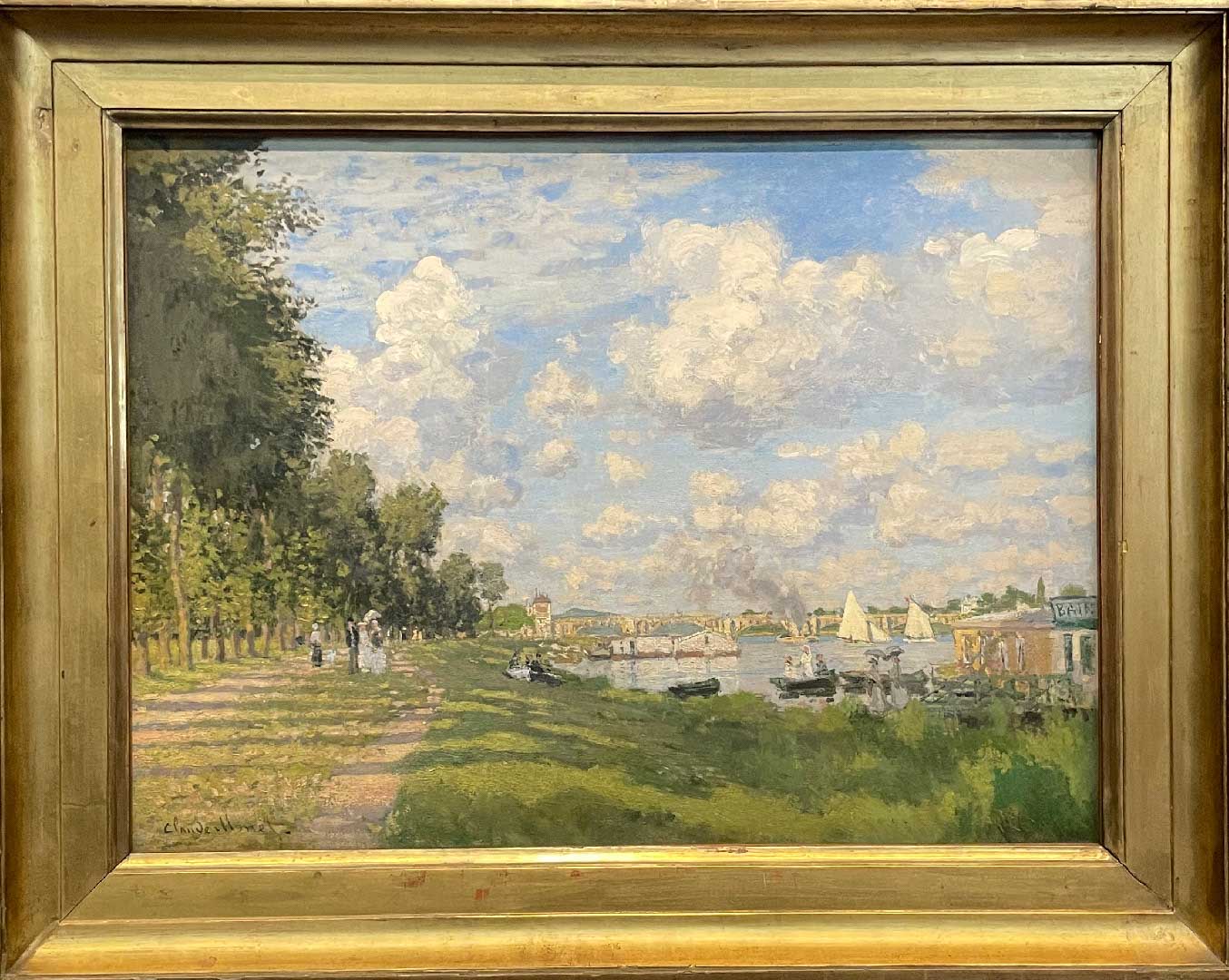
The Basin at Argenteuil (1874, Oil on canvas)
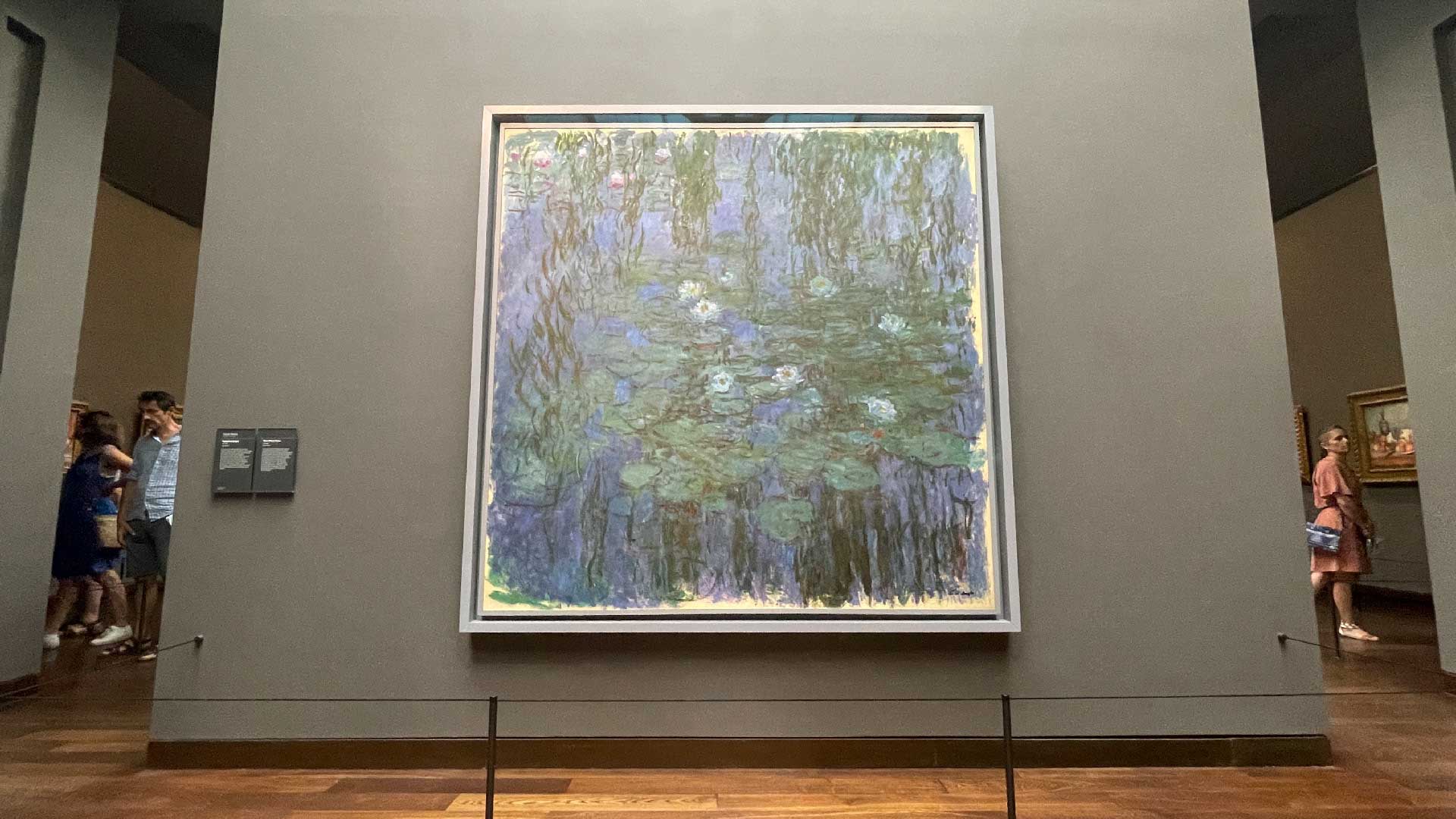
Blue Water Lilies (1919, Oil on canvas)
Café Break
There is a café for those tired and need a moment to sit down before entering the Van Gogh collection. It seemed like it would take forever to find a decent table and have our food delivered. Let’s just continue to the Van Gogh exhibit!
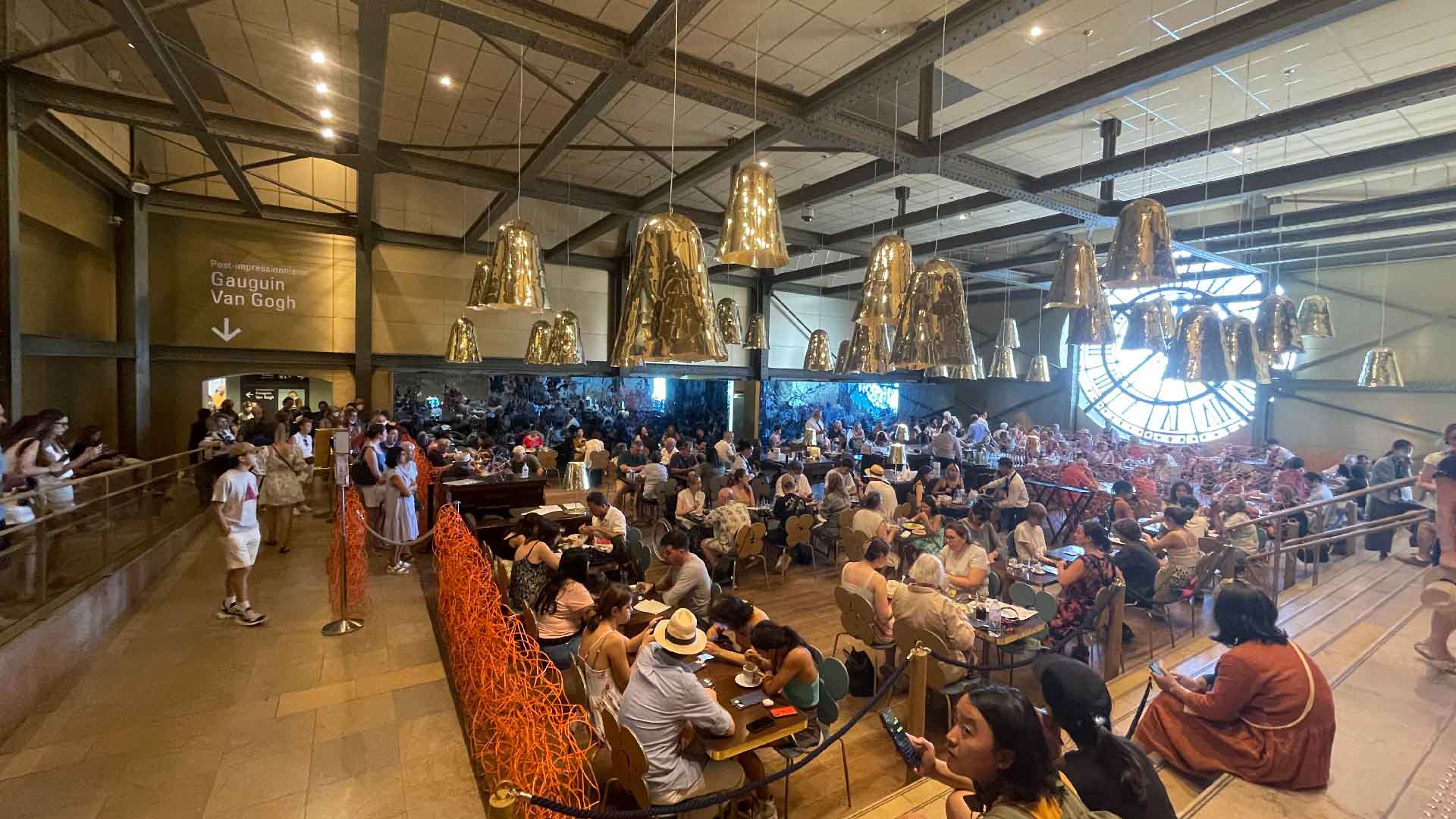
It was a pretty packed café. We thought it would be best to continue seeing art and then go somewhere else to eat.
Van Gogh
Dutch painter Vincent Van Gogh (1853-1890) spent most of his life in France. In 1886, he joined his brother Theo in Paris where he discover Monet, Renoir, Toulouse-Lautrec, and Gaugin. He turned his back on the somber naturalism of his early career in Holland and adopted a lighter palette and subjects drawn from modern life.
The simplified aesthetic of Japanese prints, Seurat and Signac’s isolated brushstrokes, and the flat areas of color separated by dark outlines favored by Emile Bernard, also marked stages in his development.
After the turmoil of his time in Paris, Van Gogh settled in Arles in the south of France to pursue his experiments with color. Gauguin joined him for a while and the two artists sometimes worked on the same subjects. Van Gogh painted very sensitive portraits and landscapes that expressed the radiant power of nature.
In the grip of mental illness, he cut off his own ear on 25 December 1886. Van Gogh was committed to a psychiatric hospital for a year in Saint-Rémy-de-Provence. He spent the final months of his life in Auvers-Sur-Oise, close to Doctor Paul Gachet, before taking his own life aged 37.
Most of the works exhibited in Musee D’orsee are gifts made in 1949 and 1954 by Doctor Gachet’s children.
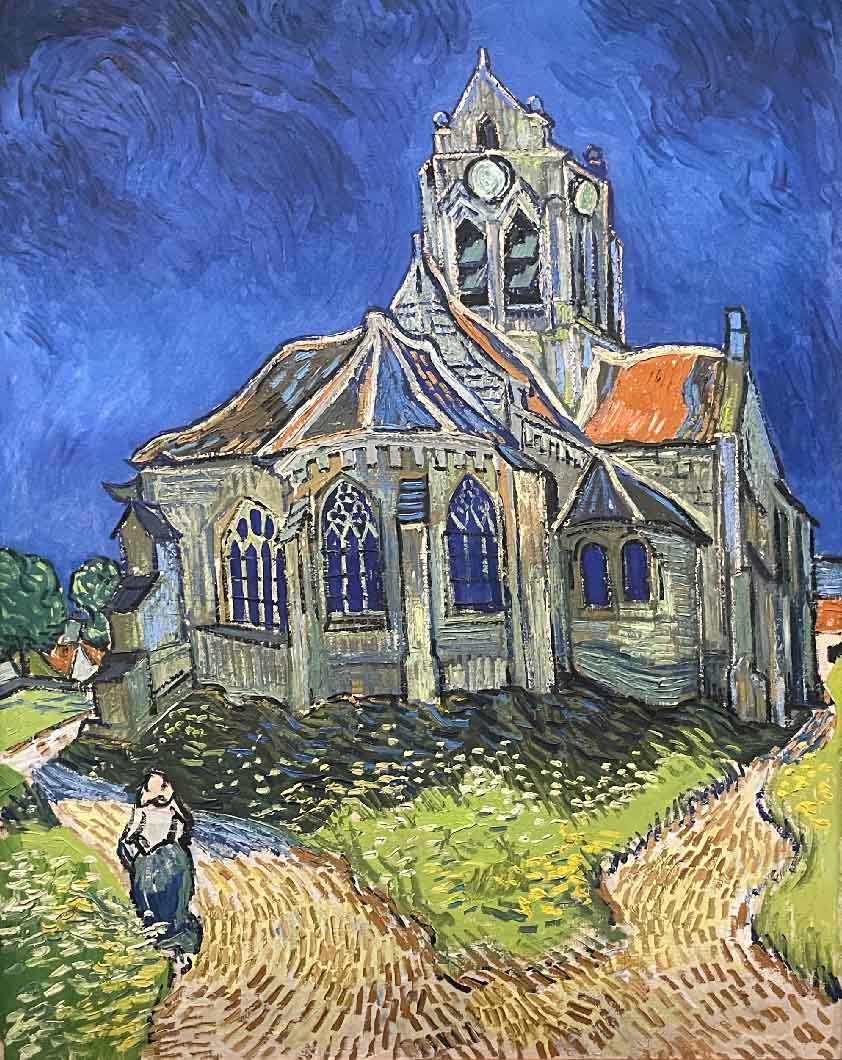
The Church in Auvers-ser-Oise, View of the Chevet. (1890, Oil on Canvas)
Between his arrival in Auvers-Sur-Oise, on 21 May 1890 and his death on 20 July, Van Gogh painted around seventy pictures. There is only one painting of the gothic church in the village. Van Gogh opted for a low-angle view of the chevet. The unstable lines and brushstrokes accentuate the impression that the building is distorted. The use of light in the scene is contradictory. The foreground is brightly lit, but the church is silhouetted against a cobalt blue background suggesting a stormy sky or nighttime.
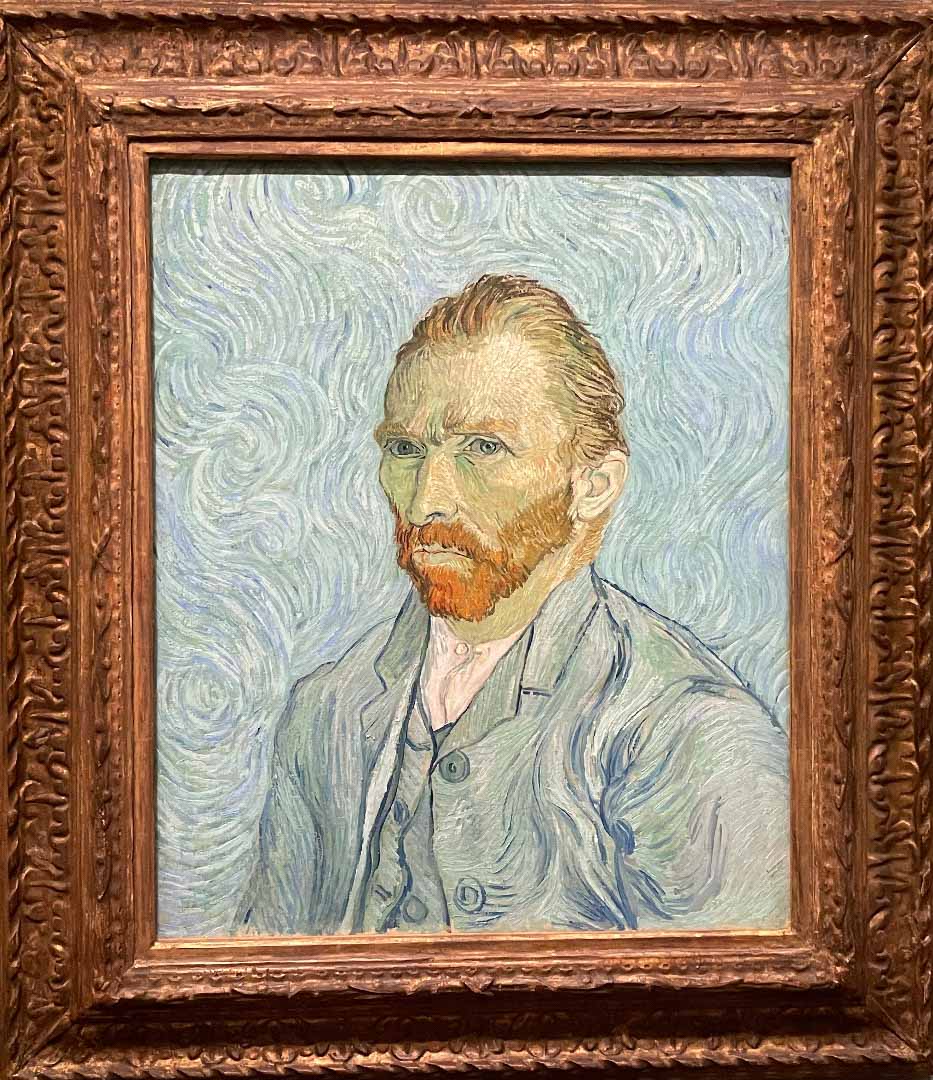
Portrait of the Artist (1889, Oil on canvas)
Van Gogh painted a number of self-portraits reflecting his physical aged mental state. This one was painted during a stay in the psychiatric hospital in Saint-Rémy, and he wrote to his brother on 20 September 1889: “Today I am sending you a portrait of me; you must look at it for a long time – I hope that you will see that my features are a lot calmer, although my expression is more unfocused than before, it seems to me.” Despite these assertions, the swirling turquoise background reveals an inner turmoil, emphasized by the mosaic of blues expression of sadness and anxiety.
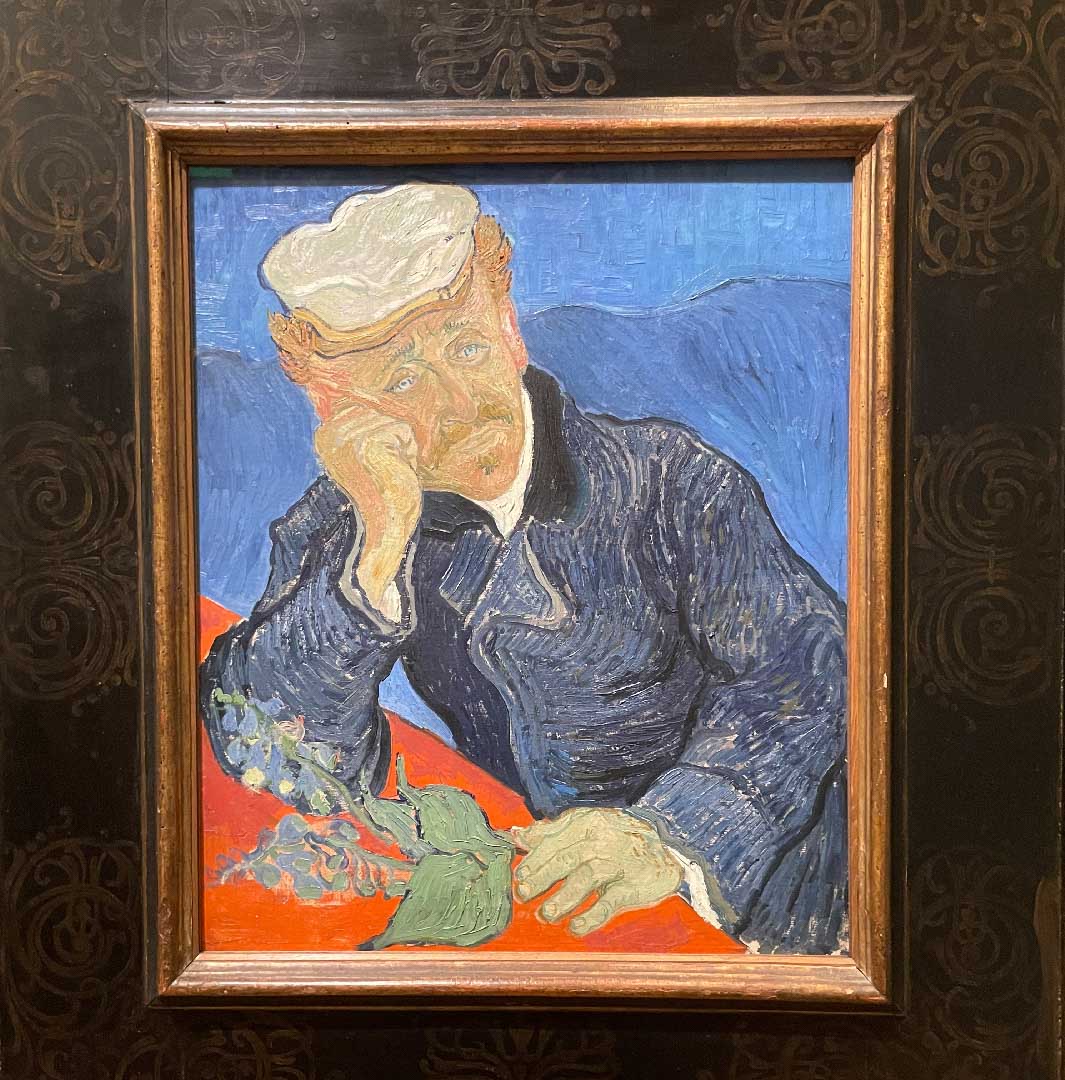
Doctor Paul Gachet (1890, Oil on canvas)
In October 1889, Van Gogh, who has been committed to a psychiatric hospital in Saint-Rémy-de-Provence, experienced a remission of his symptoms and was keen to leave for the south of France. His brother suggested moving close to Dr. Gachet, a doctor in Auvers -sur-Oise who “paints in his spare time” and “knew all the Impressionists”. When he arrived there in May 1890, Vincent then produce a photographic likeness, he tried to express the gentle air of melancholy of his sitter. There are two versions of this portrait dated June 1890, this is the second of the two.
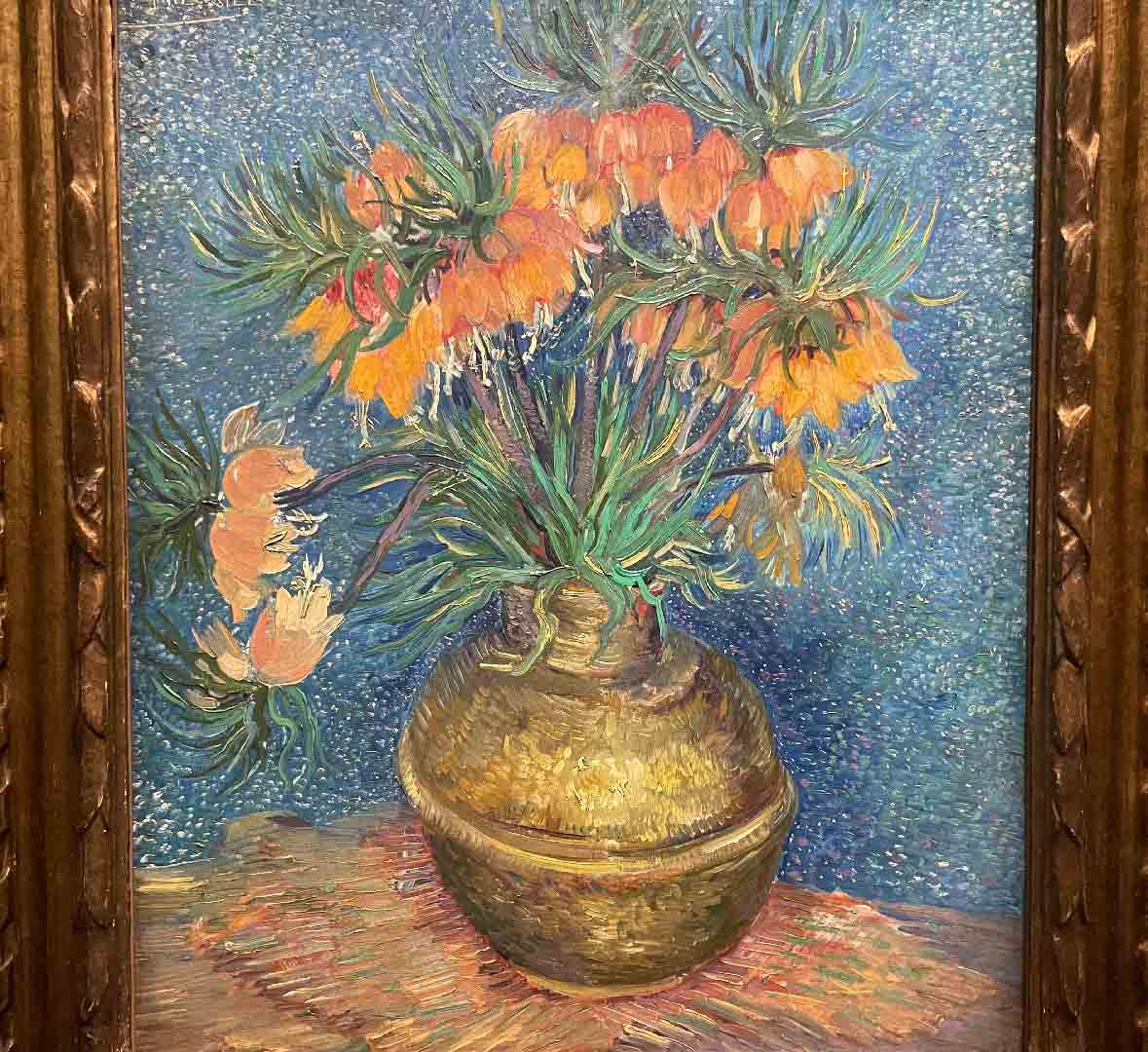
Imperial Fritillaries in a Copper Vase (1890, Oil on canvas)
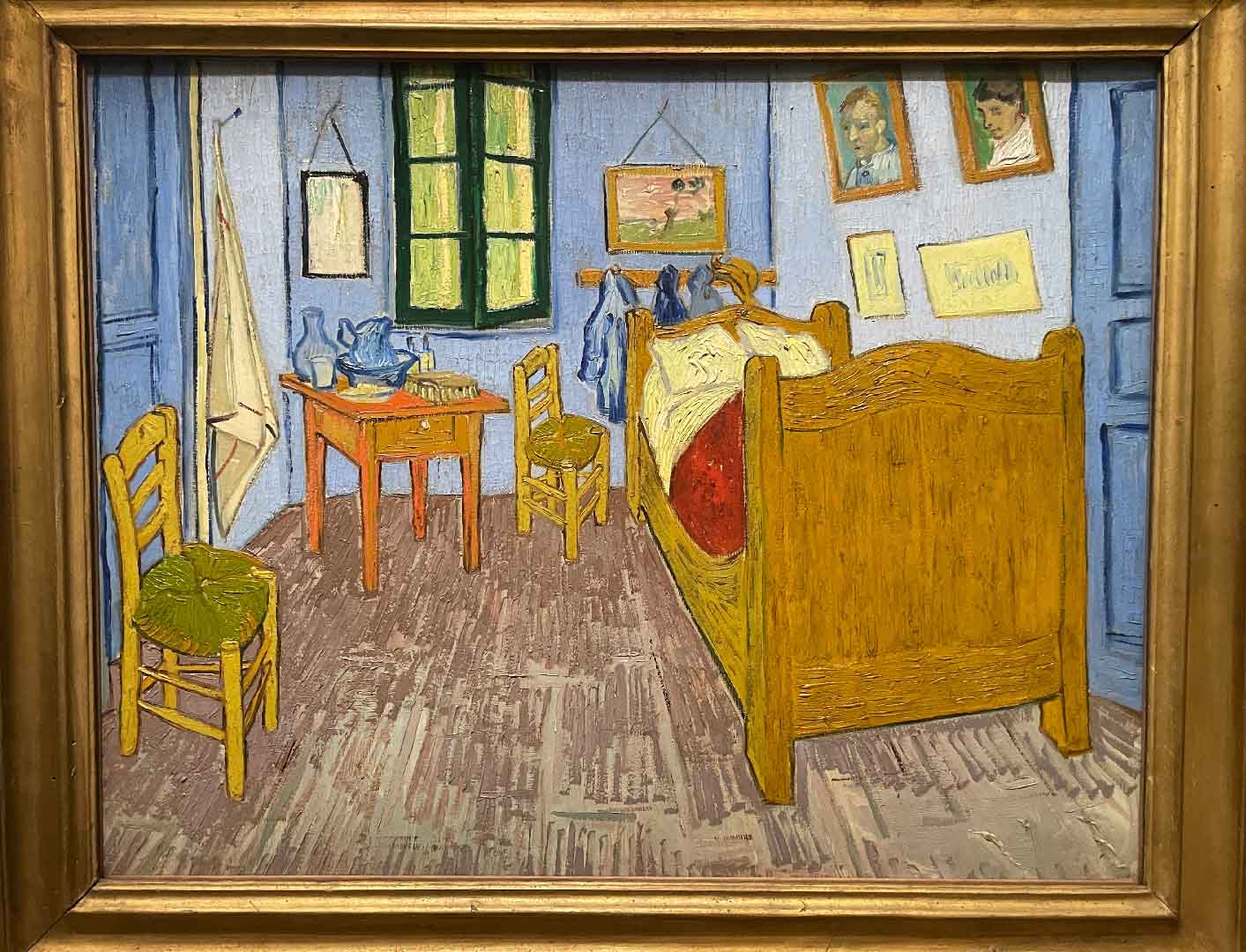
The Bedroom in Arles (1888, Oil on canvas)
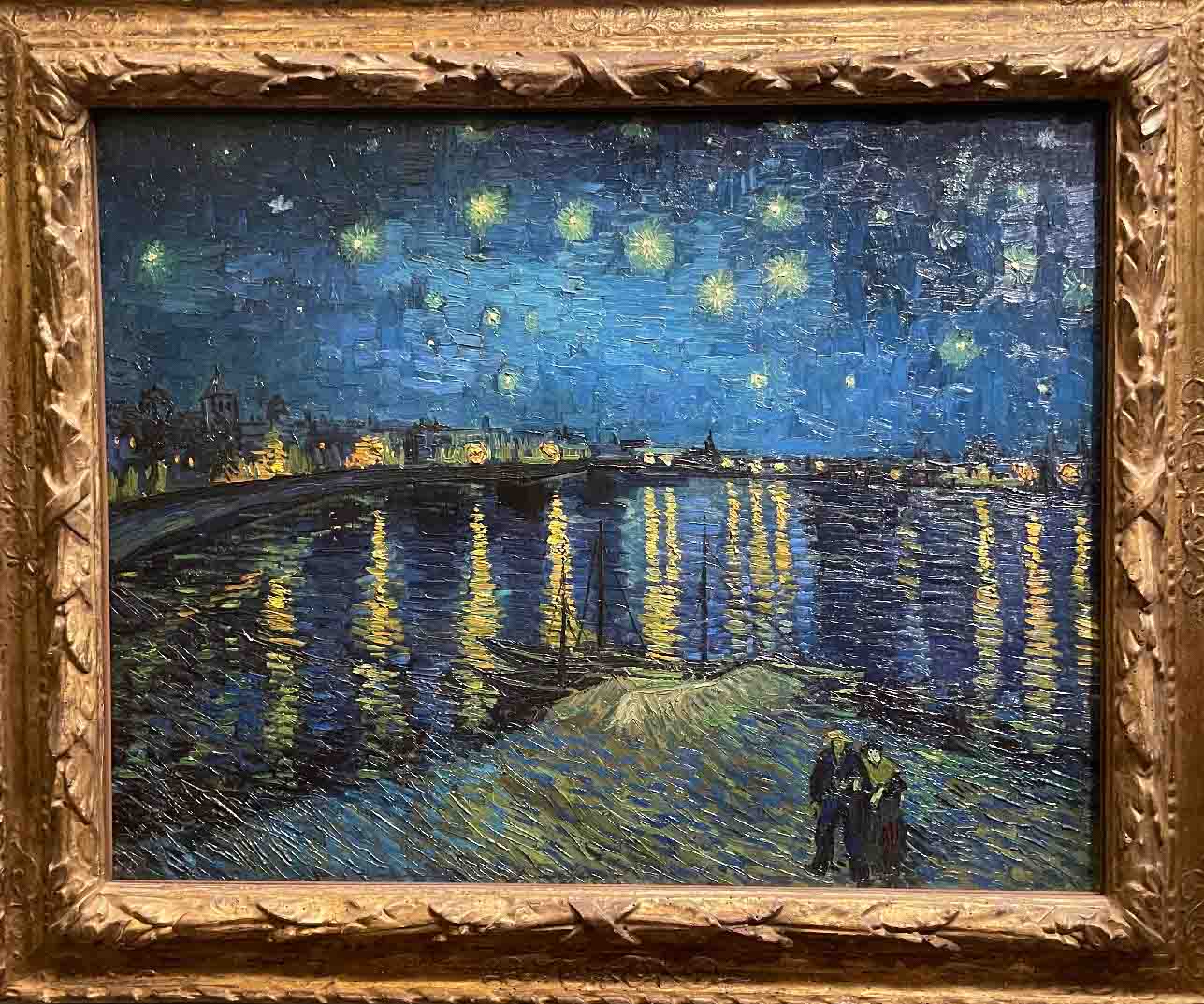
The Starry Night Over the Rhône (1888, Oil on canvas)
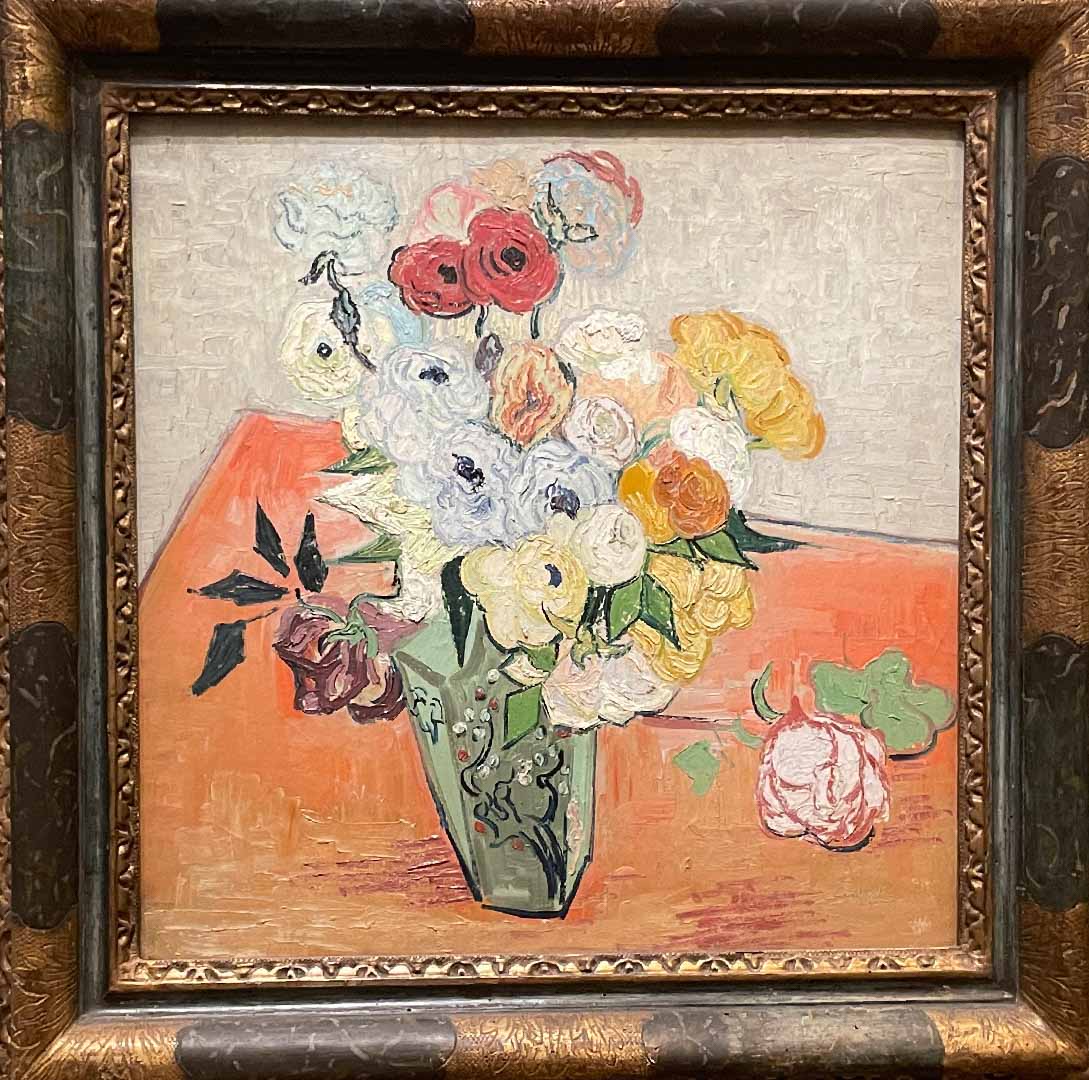
Roses and Anemones (1890, Oil on canvas)
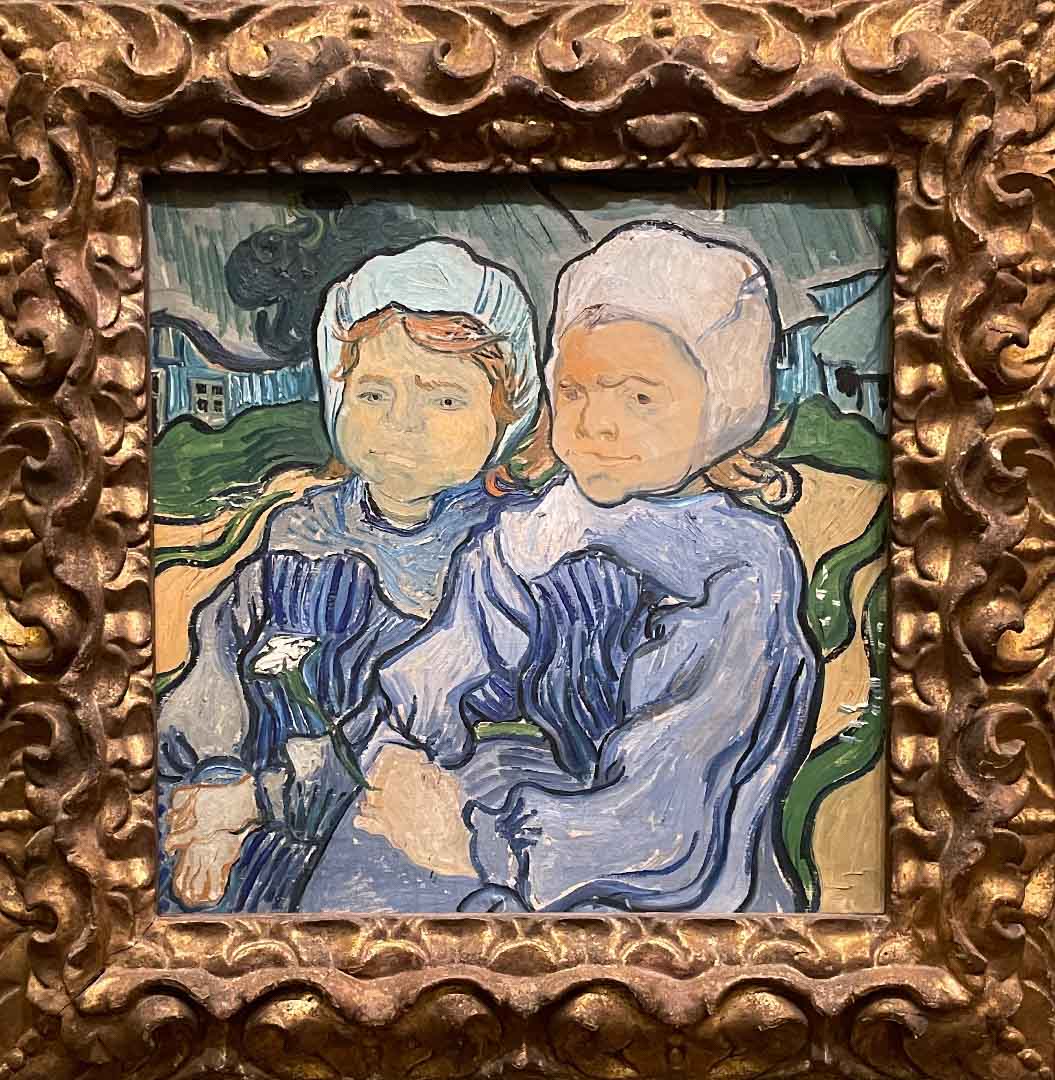
Deux fillettes / Two Little Girls (1890, Oil on canvas)
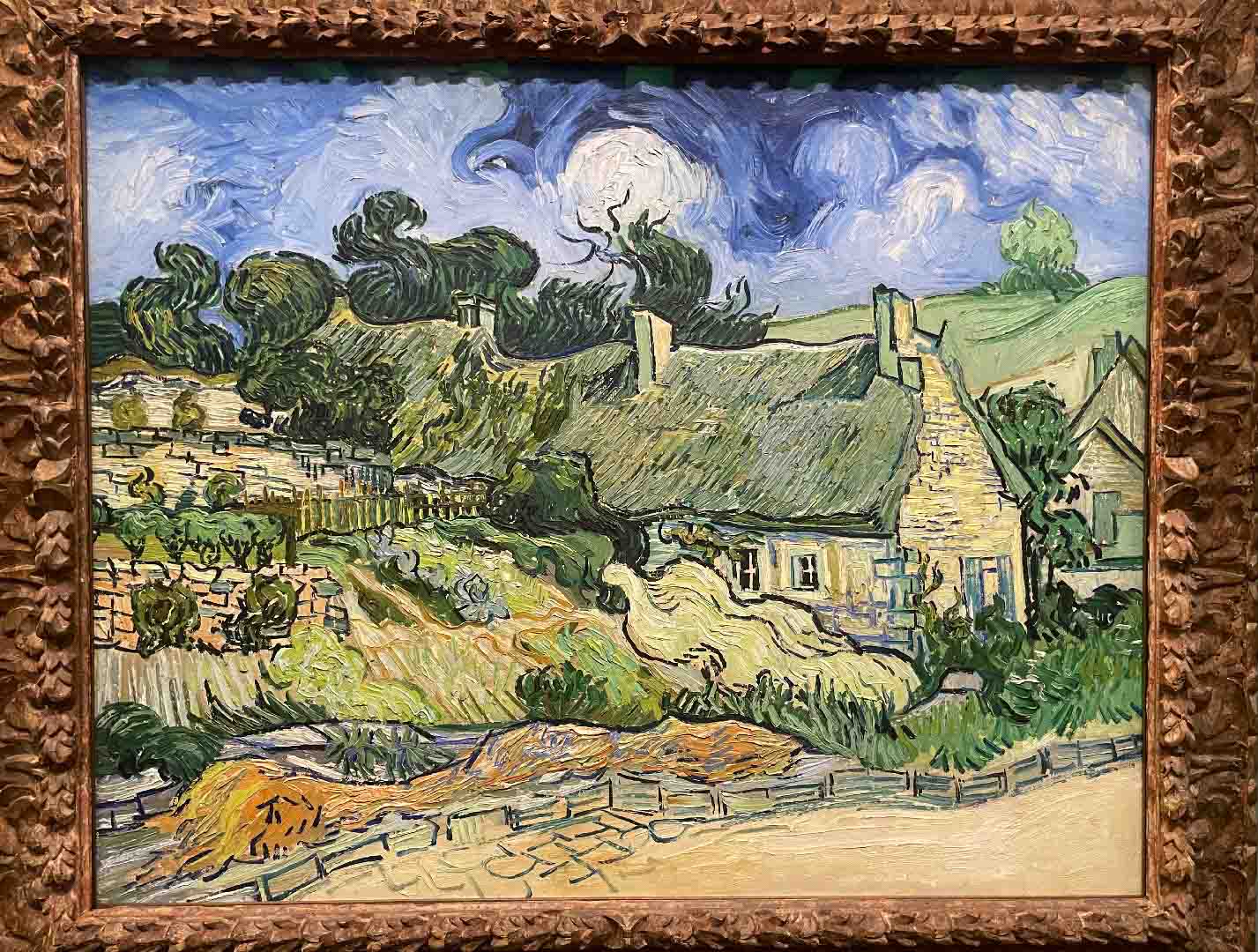
Thatched Cottages at Cordeville (1890, Oil on canvas)
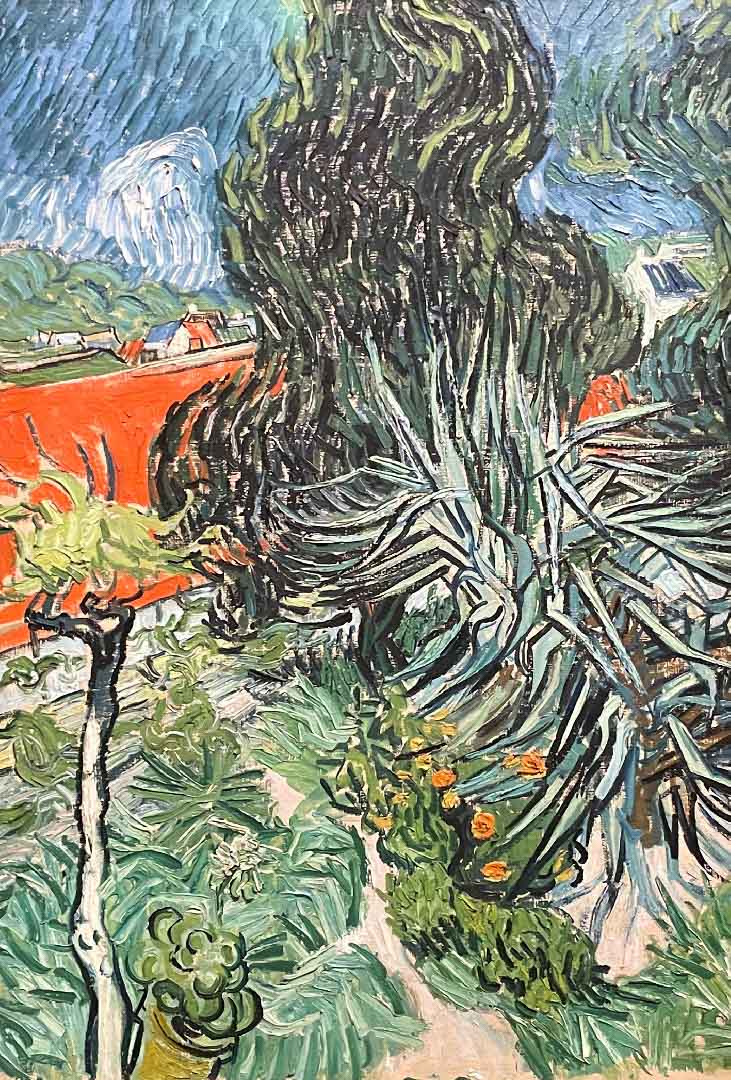
Thatched Cottages at Cordeville (1890, Oil on canvas)
Other Artists
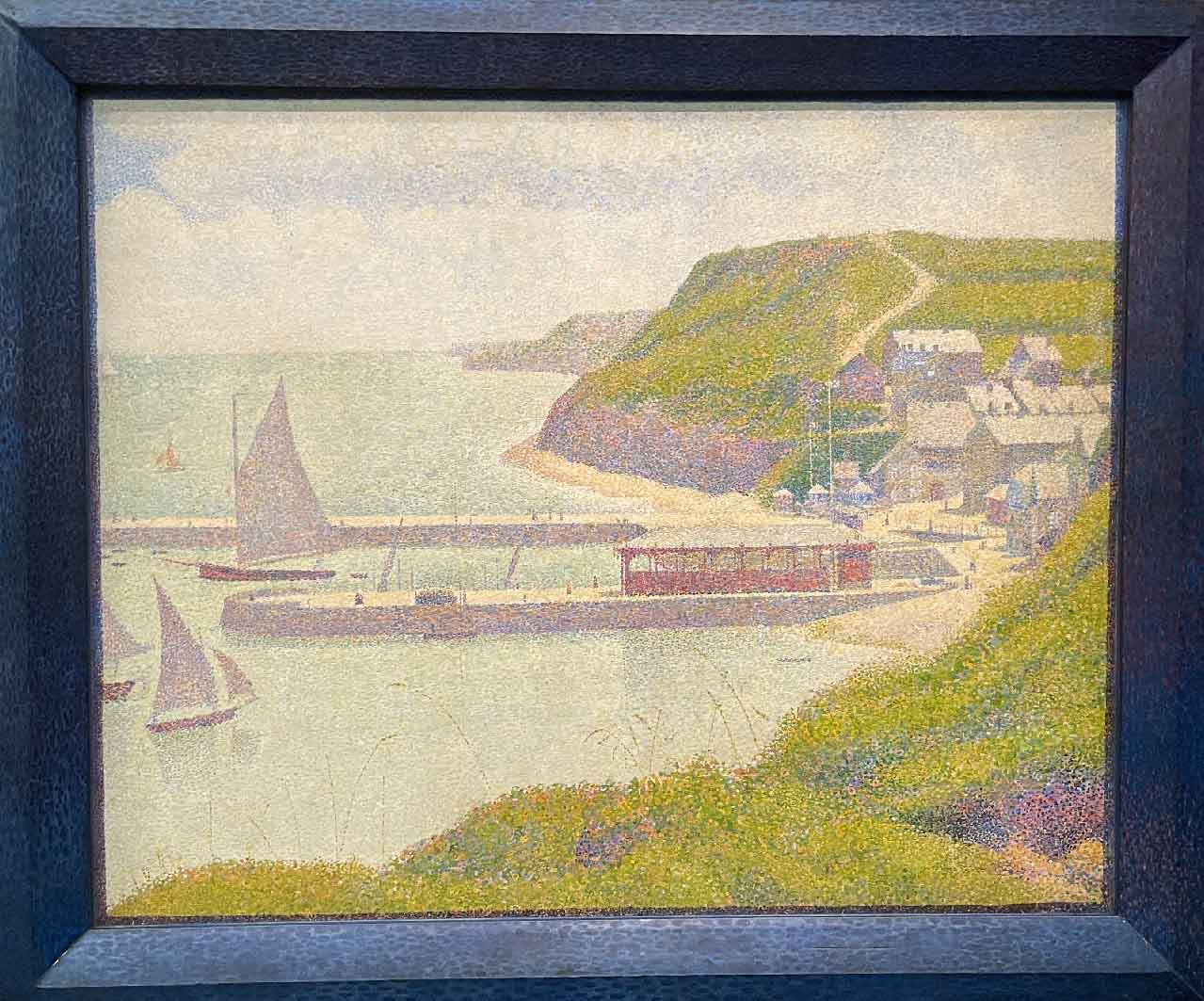
Harbour at Port-en-Bessin at High Tide by Georges Seurat (1888, Oil on canvas)
Every summer, Seurat would visit the Channel coast. This view of a barber on the Normandy shore is surprising in its extreme simplicity. The sinuous coastline contrasts with the straight lines of the harbor walls and horizon.
The painter treats the houses and harbor walls as simple volumes and boasts in silhouette, excluding any human figures. The brushstrokes applied as tiny dots recreate the dazzling pale light in subtle shaded tones.
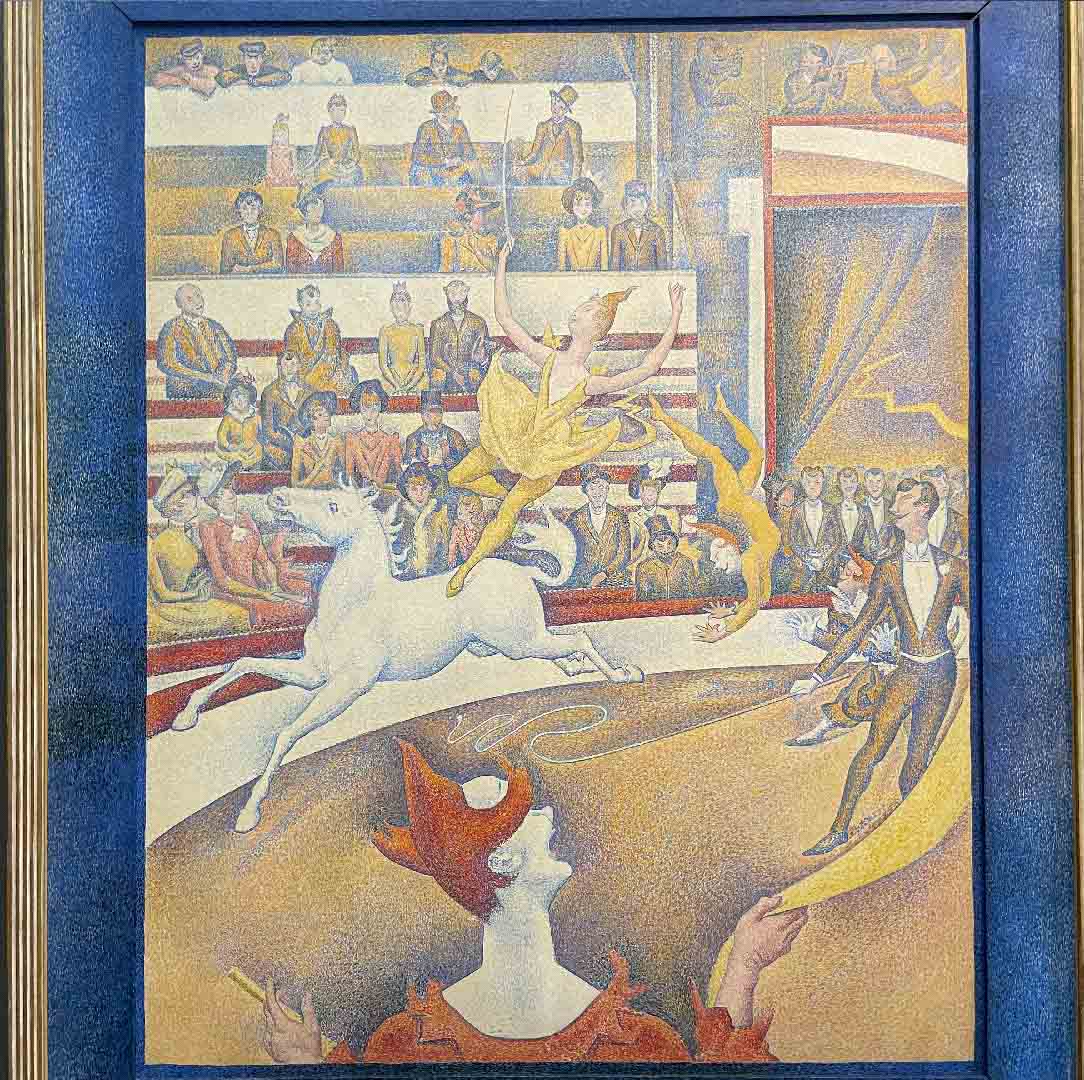
Circus by Georges Seurat (1891, Oil on canvas)
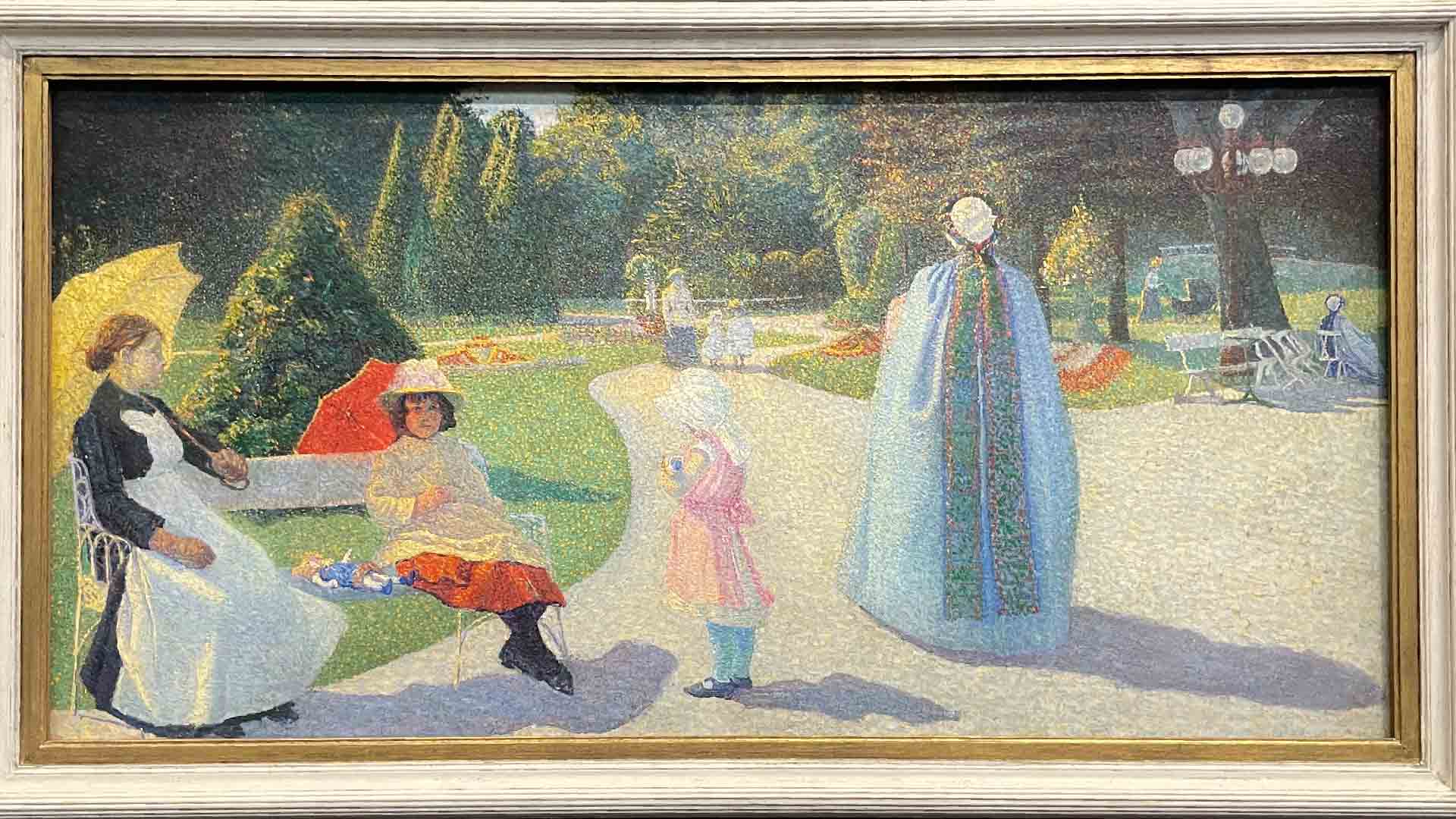
Á l’Harmonie (Jardín Public) by Georges Morren (1891, Oil on canvas)
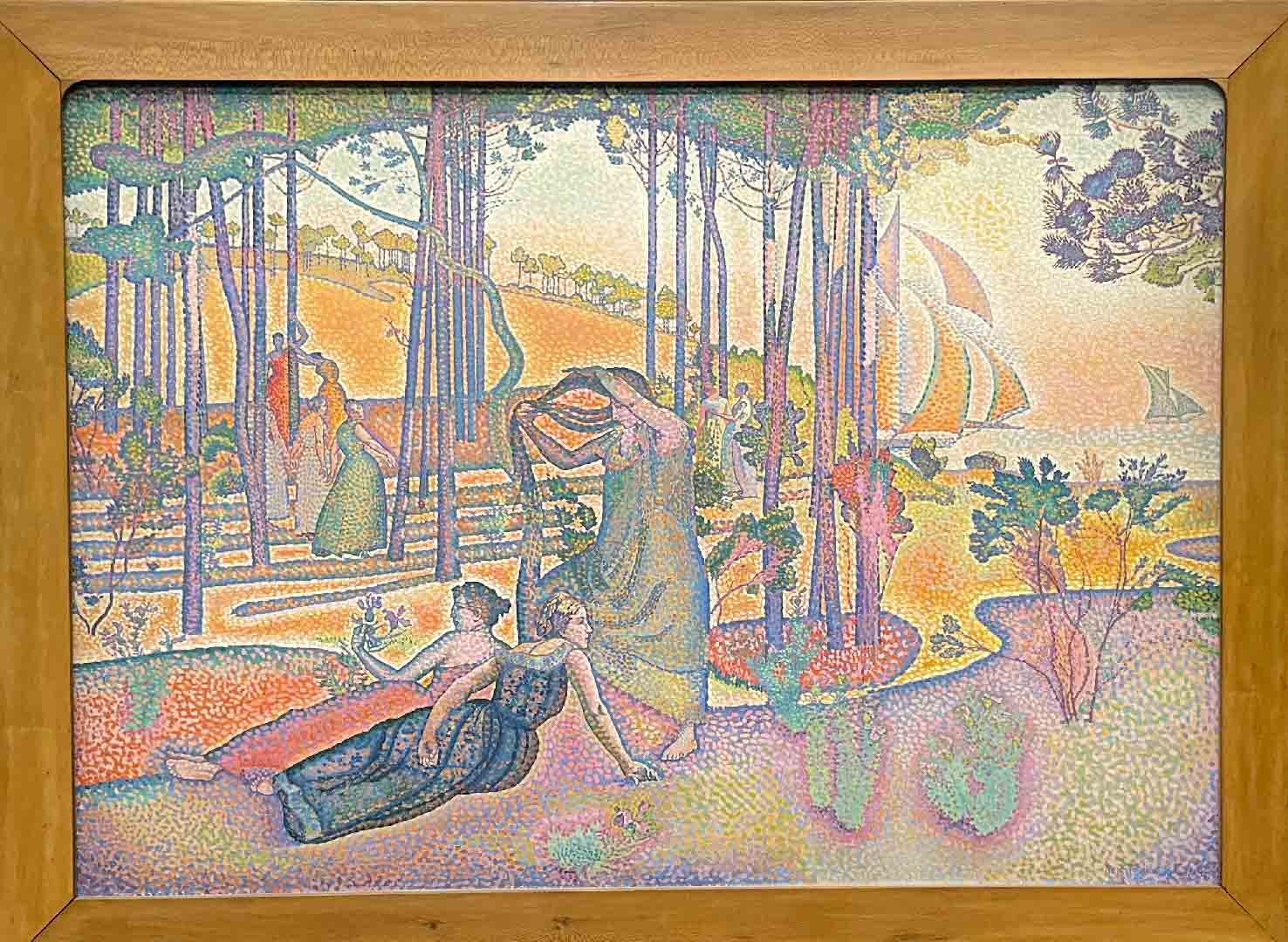
L’Air du soir by Henri-Edmond Cross (1894, Oil on canvas)
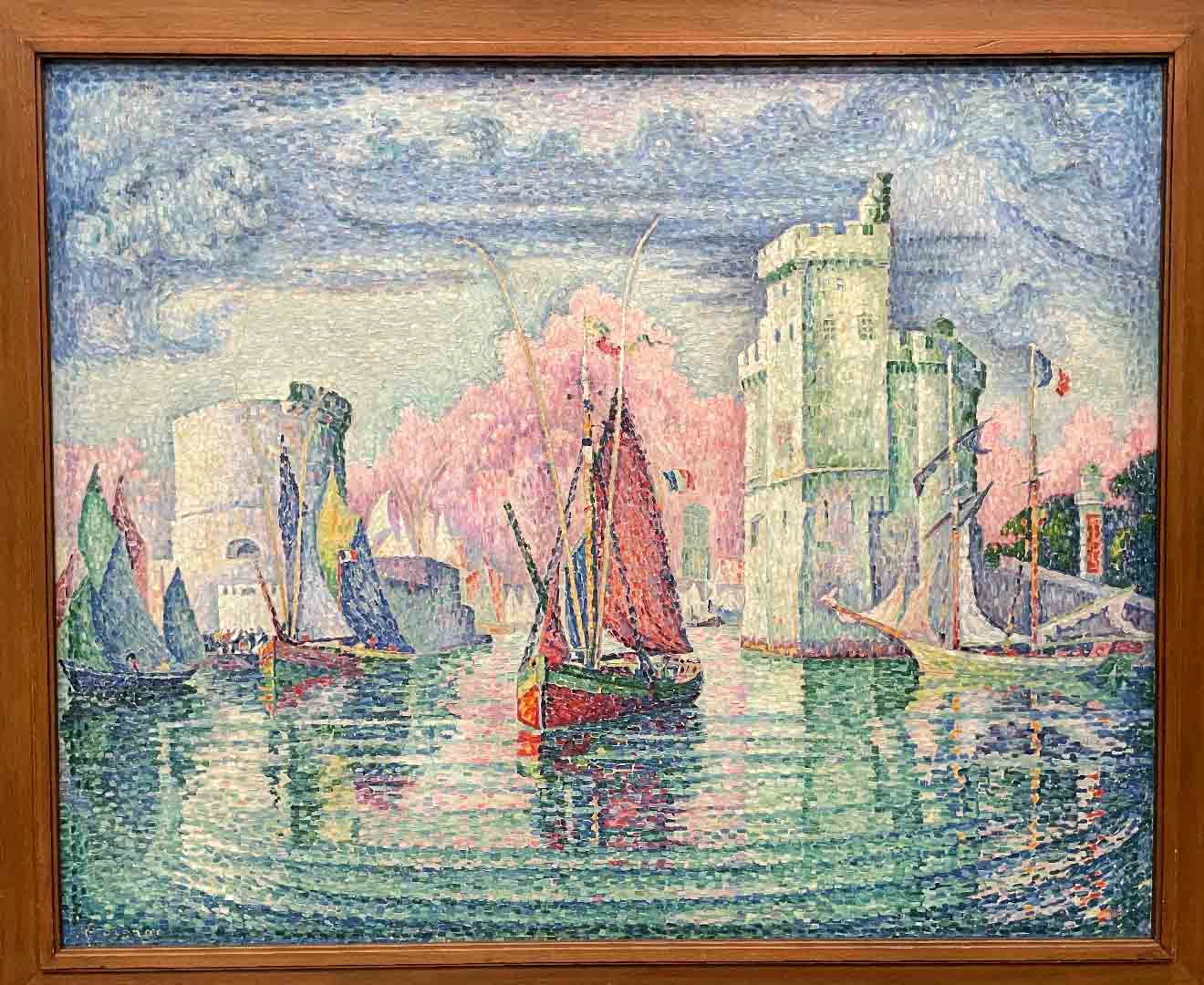
Entrance to the Port of la Rochelle by Paul Signac (1921, Oil on canvas)
The Musée d’Orsay focuses on France’s painters and invites visitors to the world of impressionism. It’s interesting to notice that the Académie des Beaux
Closing Thoughts
The Musée d’Orsay focuses on France’s painters and invites visitors to the world of impressionism. It’s interesting to notice that the Académie des Beaux-Arts continuously rejected talented painters and their artwork, which was inevitably critically acclaimed worldwide.
There’s still so much art that I haven’t shared from artists such as Henri de Toulouse-Lautrec, Paul Signac, Georges Morren, Henri-Edmond Cross, and Georges Seurat. I need to come back again and include them. I love learning about artists who believed in themselves and dared to change the way society perceived art. What did you think about Musée d’Orsay?
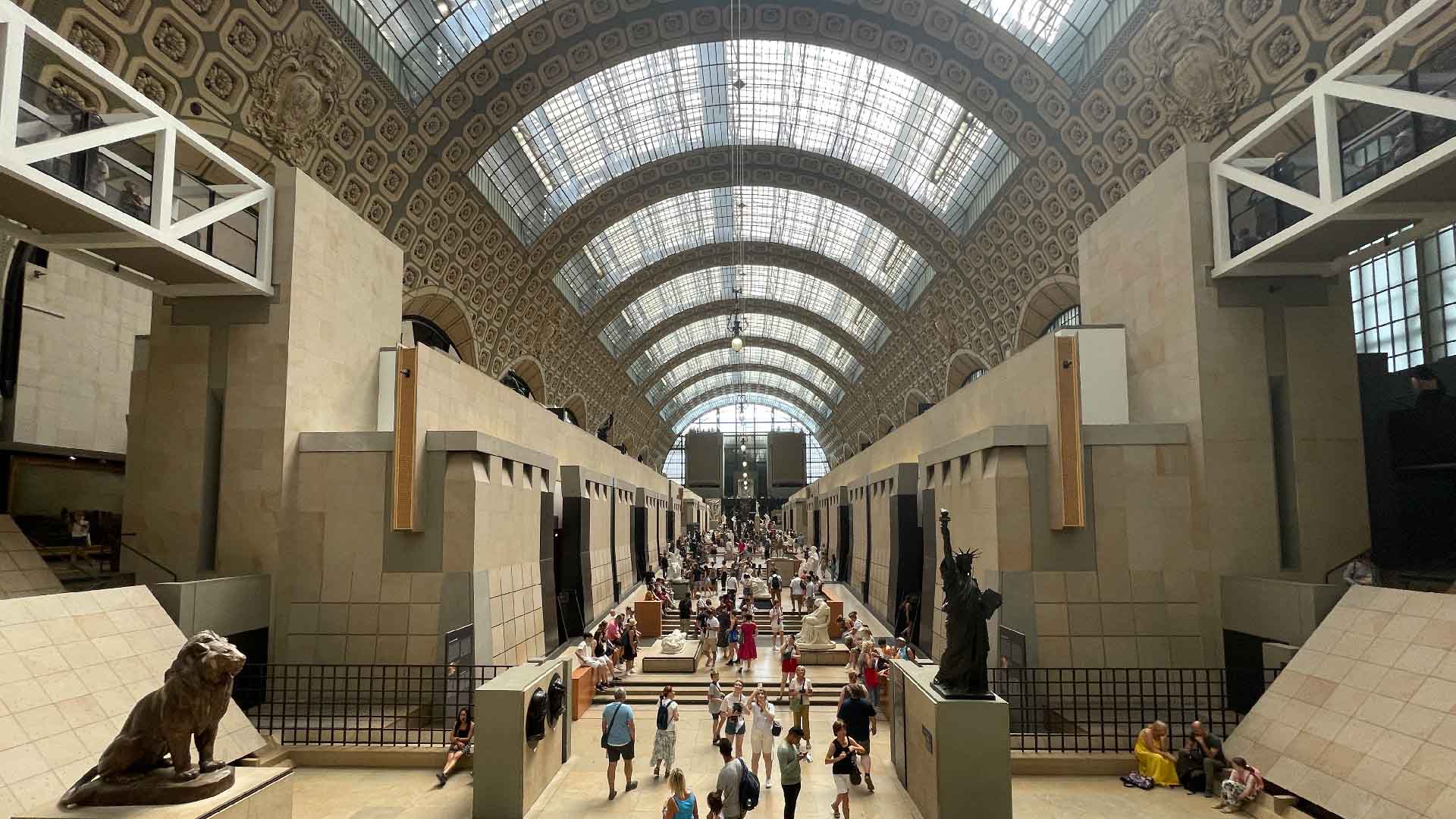
More Treasures to Discover
Learn about the latest news in El Salvador through Walkway, a free extension developed for Google Chrome and Microsoft Edge. Enjoy photographs of El Salvador, taken by national photographers, every time you open a new tab. The Walkway extension is perfect for locals, tourists, and people who love to travel. It’s also a portal to continue enjoying the content on Life’s Hectic.





One Response
Good post! We will be linking to this particularly great post on our site. Keep up the great writing